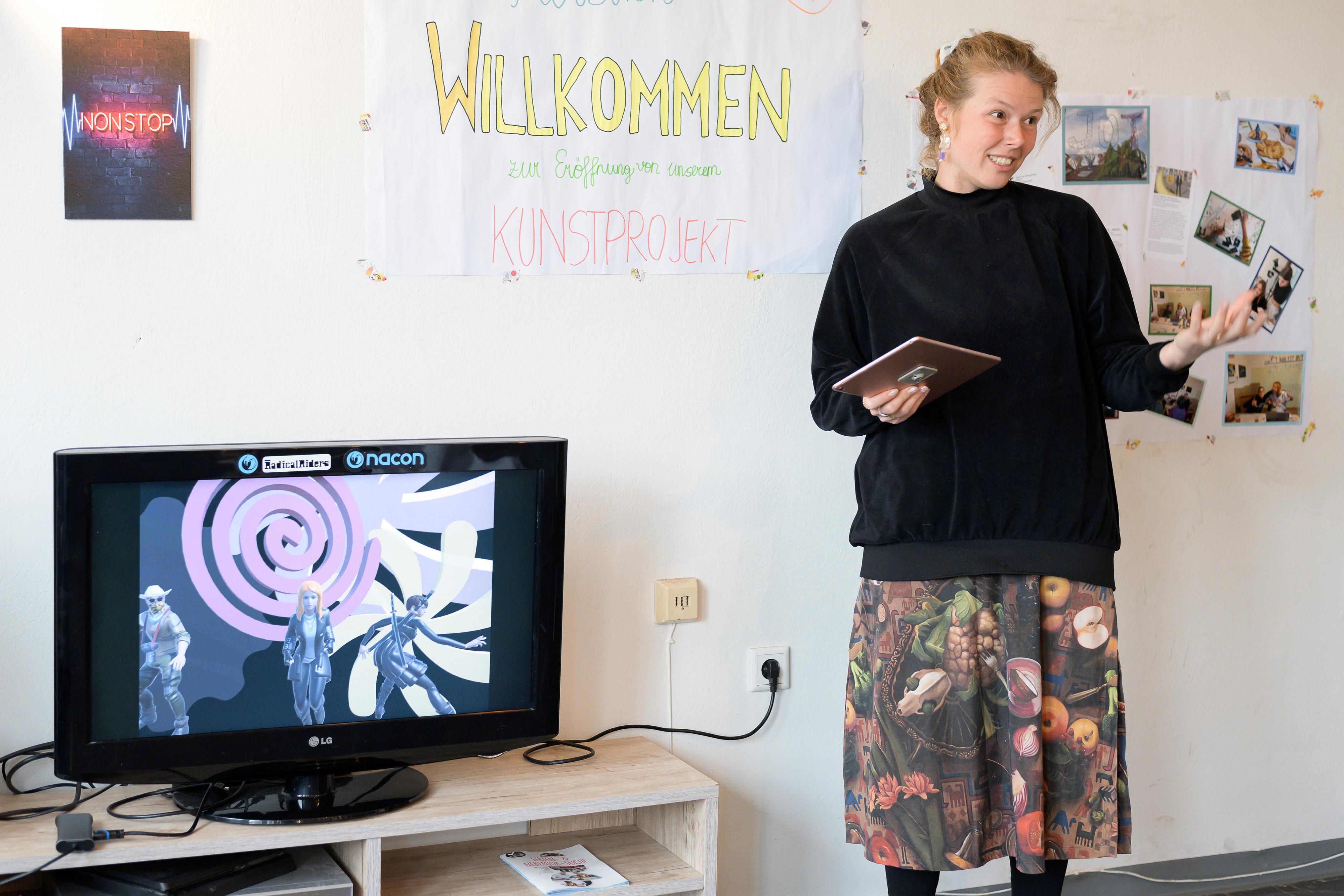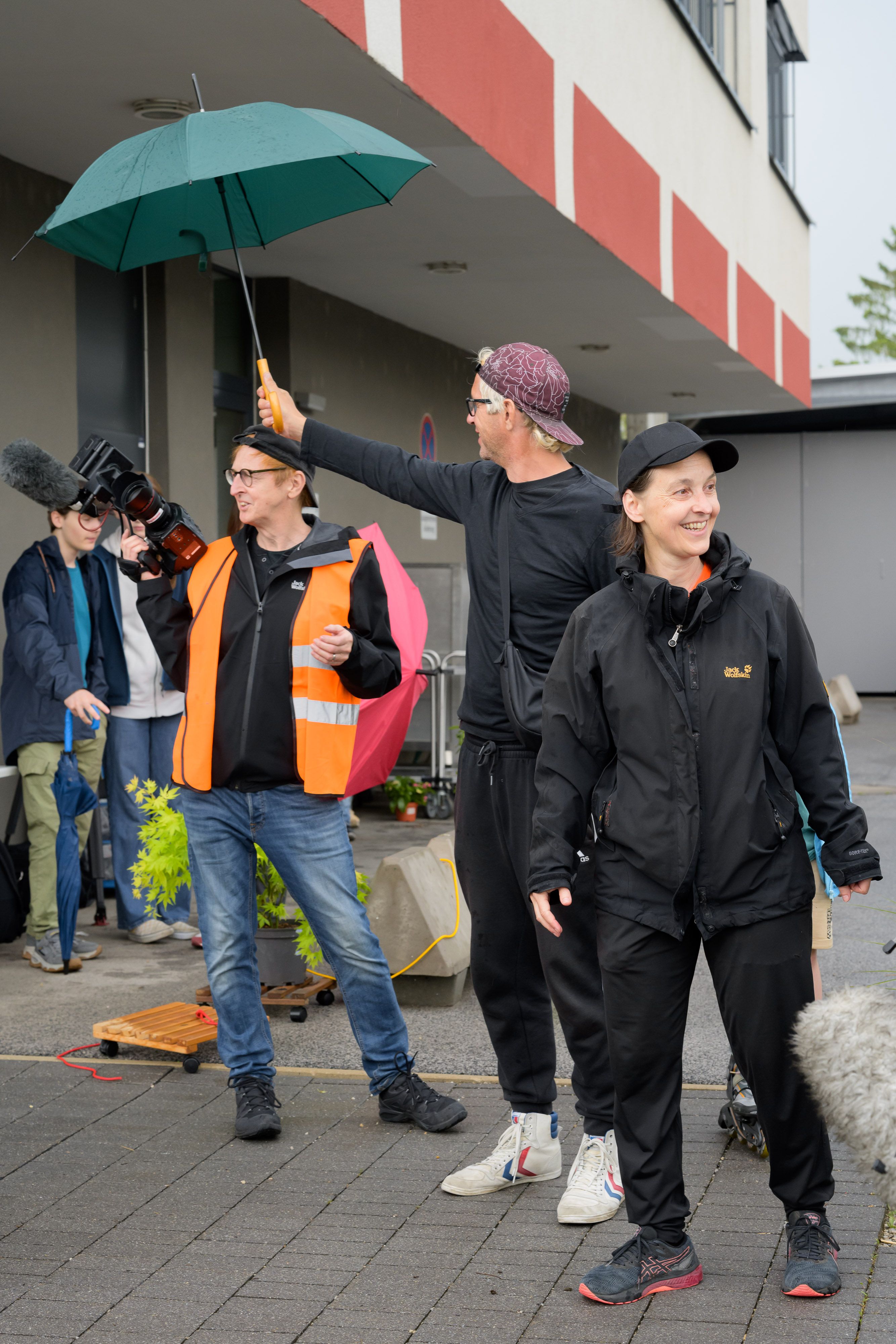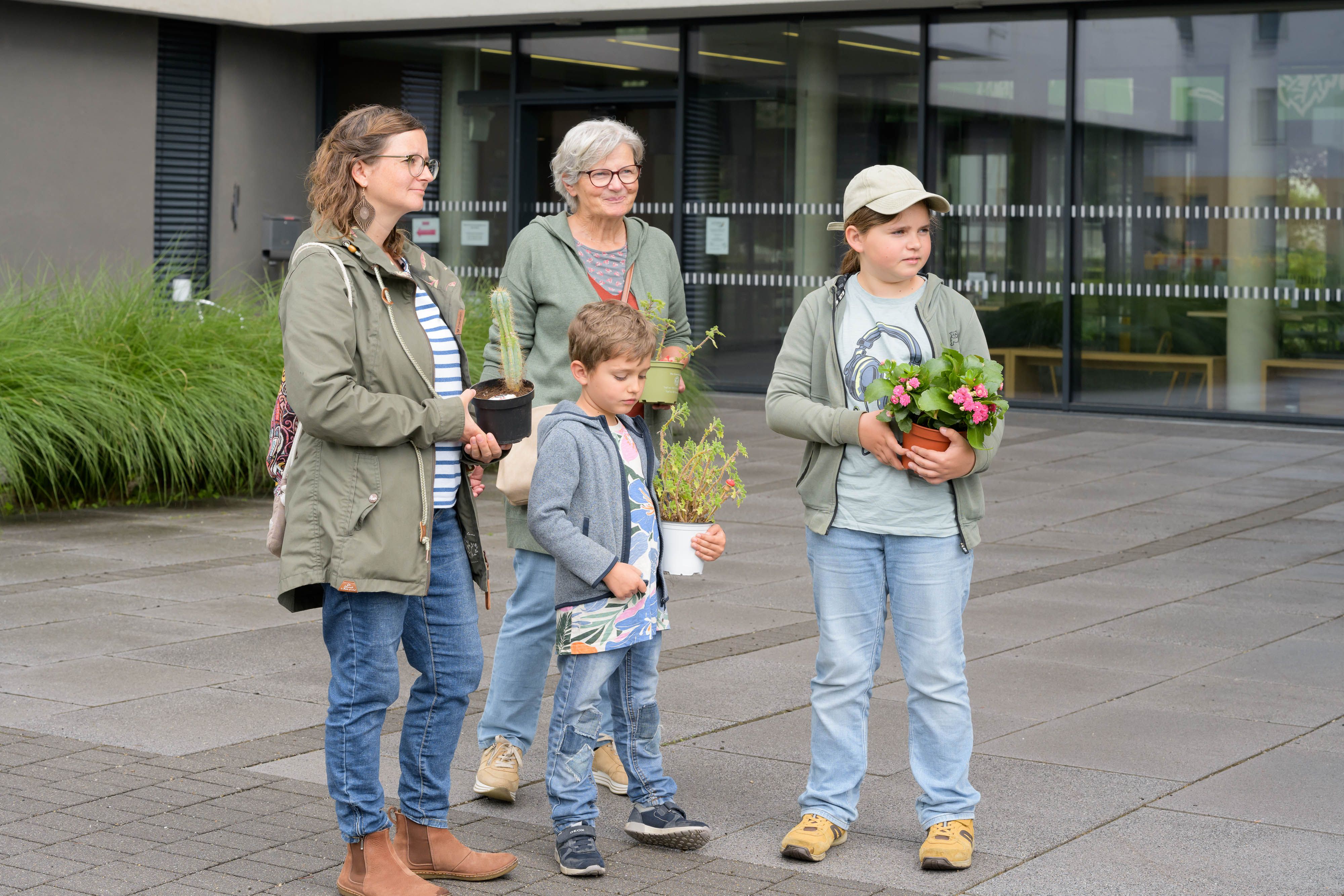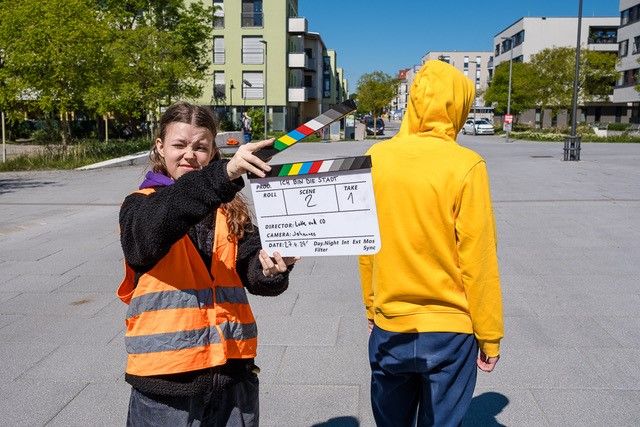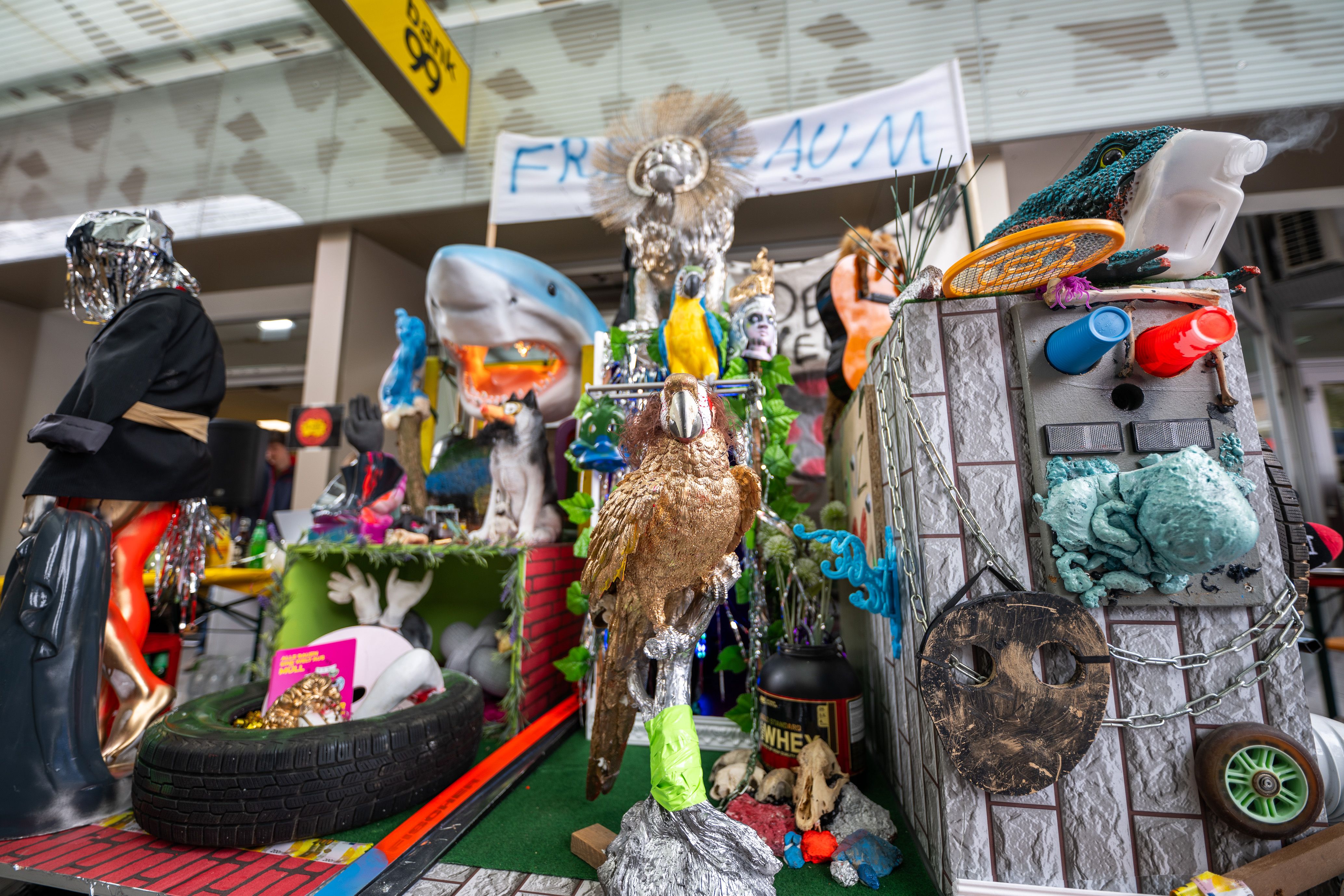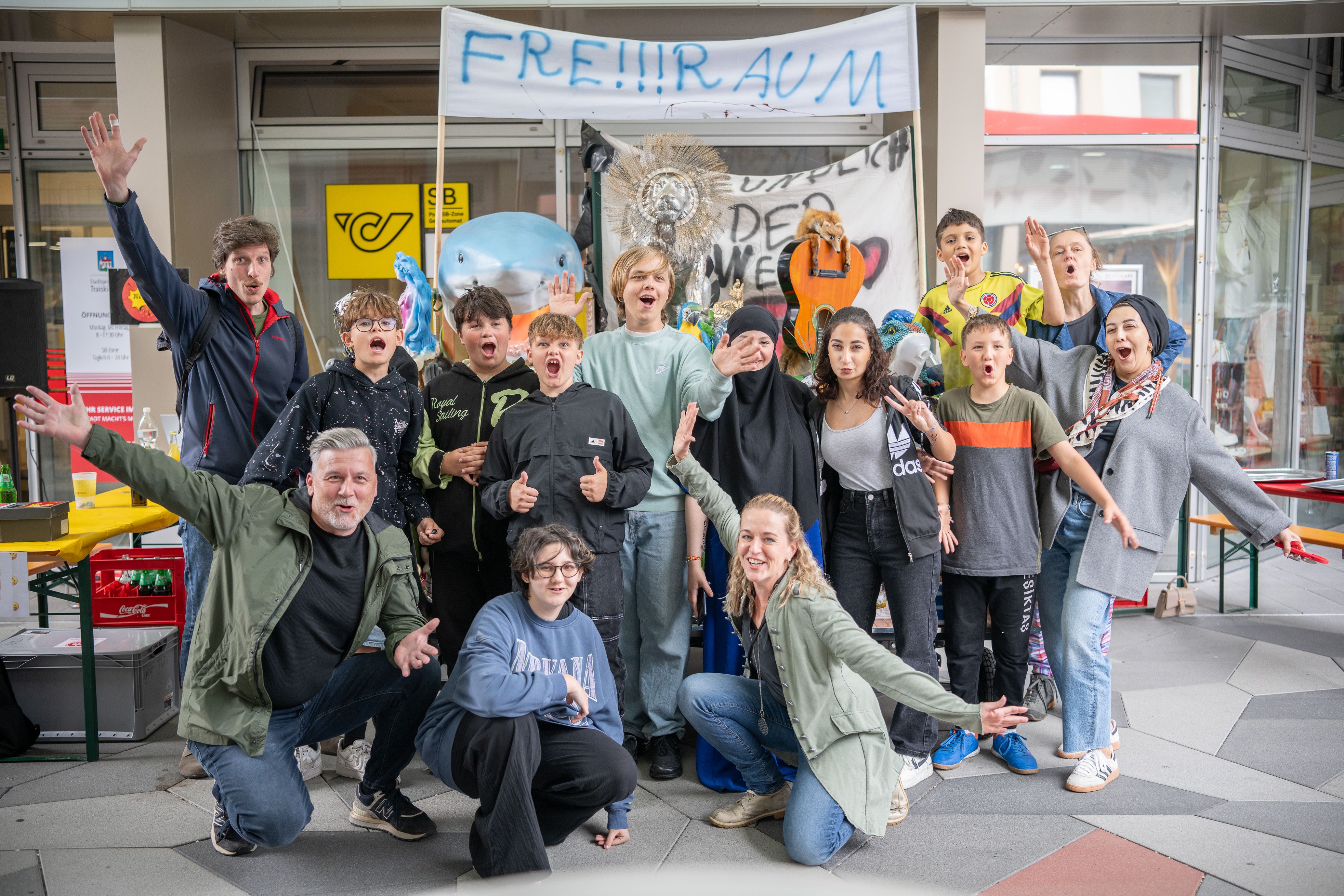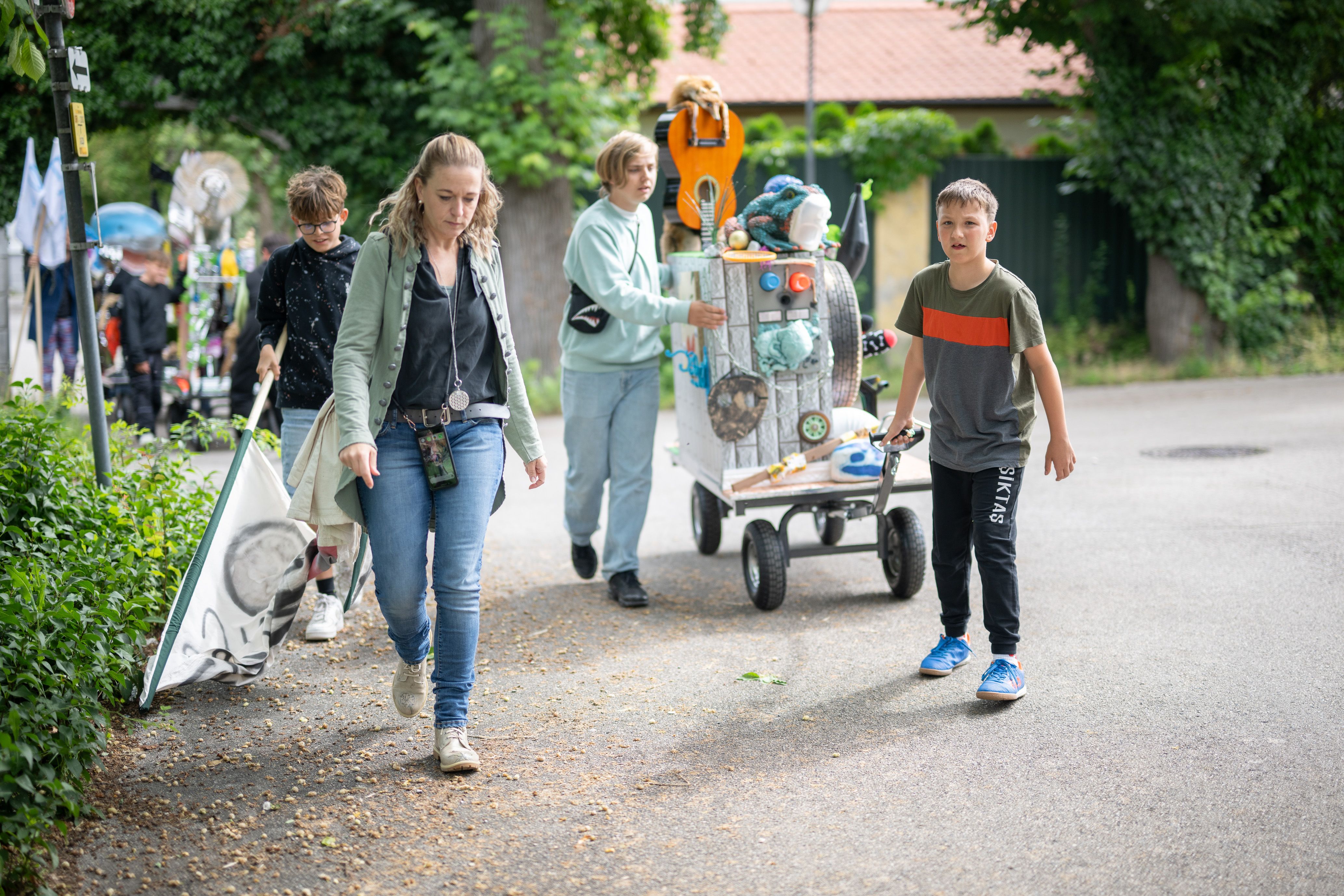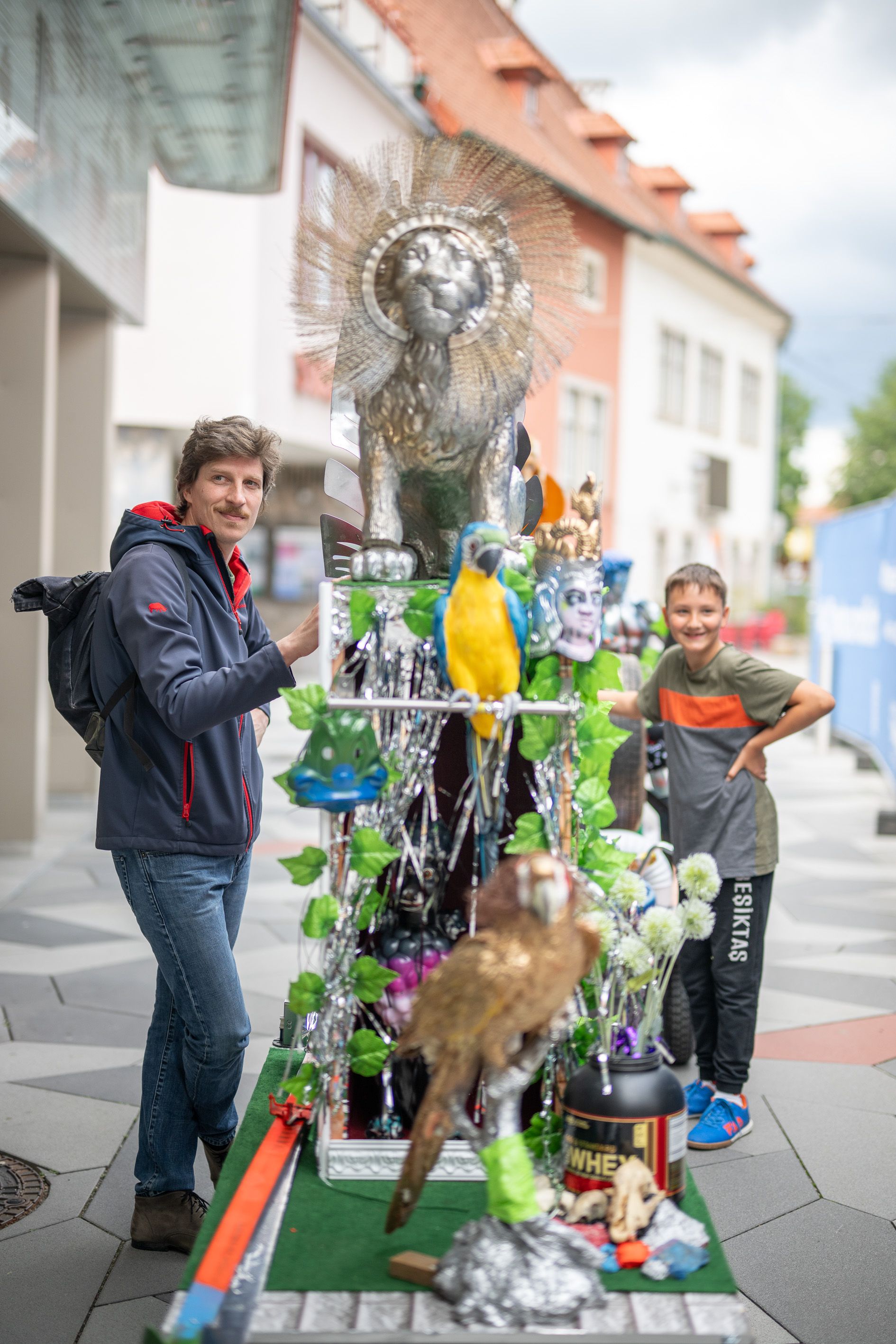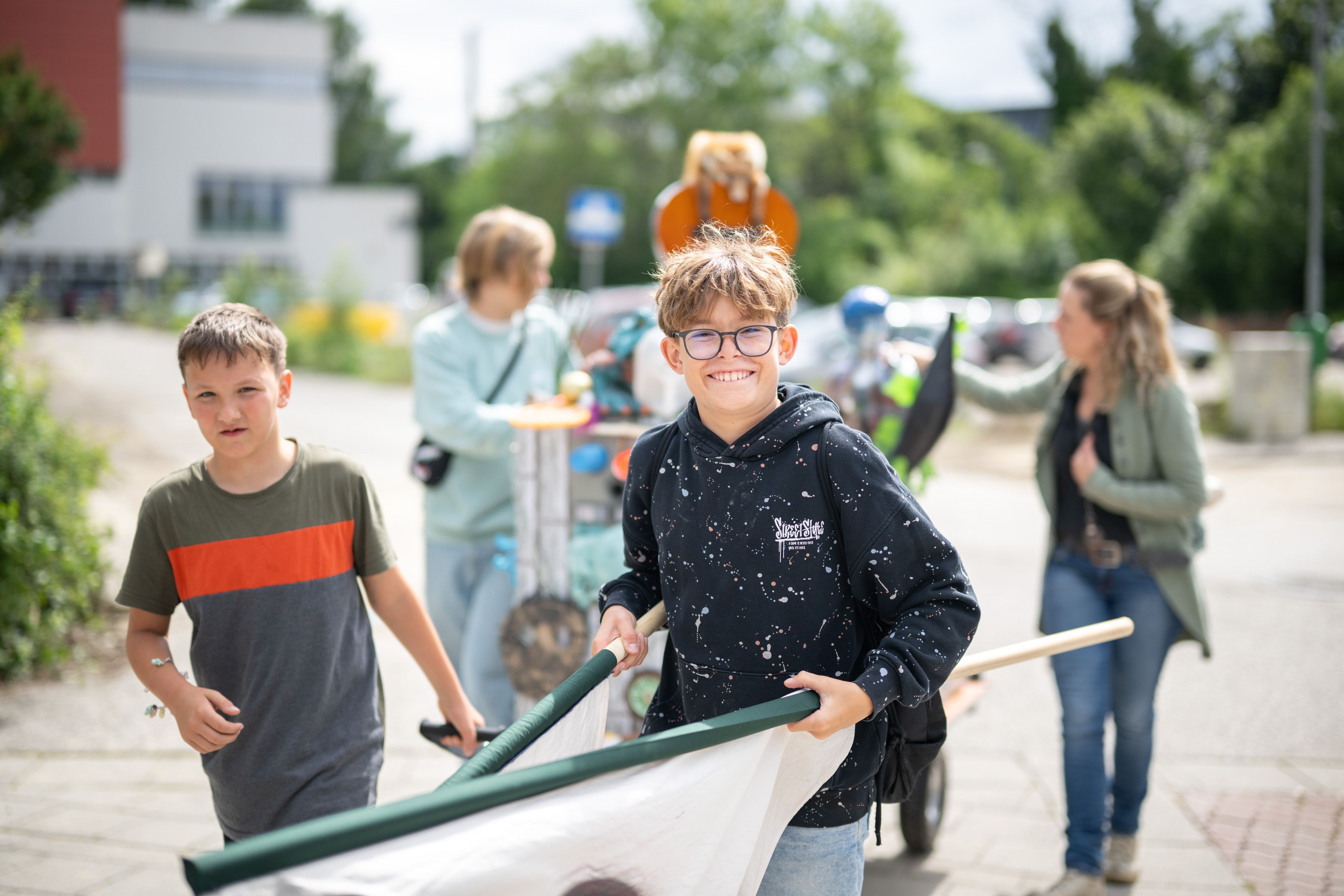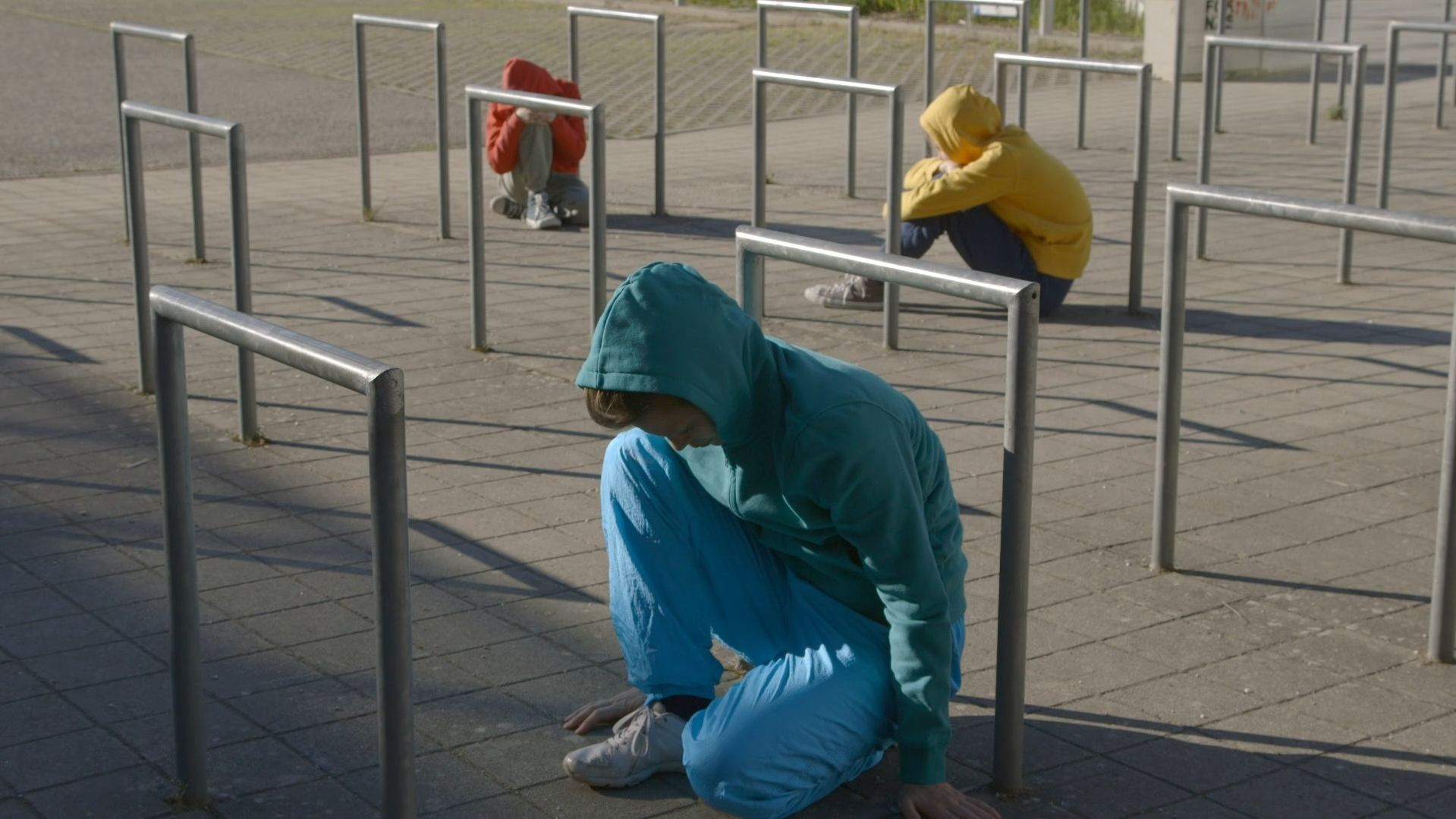Stadt-Raum-Welt-What? (CITY, SPACE, WORLD, WHAT?)
BackArtists
- With
Information
The public realm is not a homogenous entity; it is a conglomerate of many necessities and needs that can take many shapes and is used by a variety of different people. Who uses or spends time in what space is influenced by many aspects, like its purpose, history, design, or how well it is maintained. Families spend their time in different places than older people or teenagers do. Especially for younger people, public spaces provide the chance to be themselves, to have fun without being watched over, or simply to meet friends outside of their own homes.
Stadt – Raum – Welt – What? (City, Space, World, What?) was initiated by KOERNOE (Public Art Lower Austria) as a way to get artists and teenagers to work together to explore the public realm, investigate various issues connected with it, and develop artistic projects out of the questions that emerge. The idea is for the teenagers to actively participate and play a key role in the development of each project. How the projects are realized has been explicitly left open. The digital public realm, which now has a similar status and similar challenges as real space, is also welcome as a “site” for artistic projects. These joint projects are intended to enable teenagers to adopt an unusual approach to their familiar environments and local surroundings, while also raising society’s awareness of young people.
In the pilot phase in 2024, three youth centers were chosen with the support of NÖJA (Lower Austrian Association of Open Youth Work). These were the KOMET in Traiskirchen, the Jugend Oase Traismauer (JOT), and the Outback in Wolkersdorf. The three centers then collaborated with three artists who were chosen by the KOERNOE panel: Edith Payer, Lotte Schreiber, and Joanna Zabielska. Motivating the teenagers, who took part voluntarily, communication, and interaction on equal footing were all focused on in the artistic development of all three projects. The artists were all aware that youth centers are places where teenagers meet and spend time for many different reasons and that these must therefore serve many purposes and meet a variety of needs—something that also had to be reflected on and taken into account in the artistic process. With the active support of social workers on-site, projects were planned and implemented together over a period of several months.
The collaboration resulted in three projects about three different themes realized in three different media. In Wolkersdorf, Lotte Schreiber approached a public square in an unusual way by bringing young and old people together in a film project; in Traiskirchen, Edith Payer explored questions of consumption and value together with local teenagers, while Joanna Zabielska took a daring look at the future in Traismauer.
All three of these projects opened new exciting and previously unknown windows of opportunity for the teenagers involved. The youth centers, which do important work in the communities, also agreed to take part in these experiments. As a result, the experiences they gained from this program were positive and surprising in all three cases. KOERNOE will continue the project at new locations in 2025 in an effort to continue to promote the artistic exploration of the public realm from the point of view of young people.
(Juliane Feldhoffer)
Contributions
Joanna Zablielska
Ich sehe was, was du nicht siehst (I SPY WITH MY LITTLE EYE!)
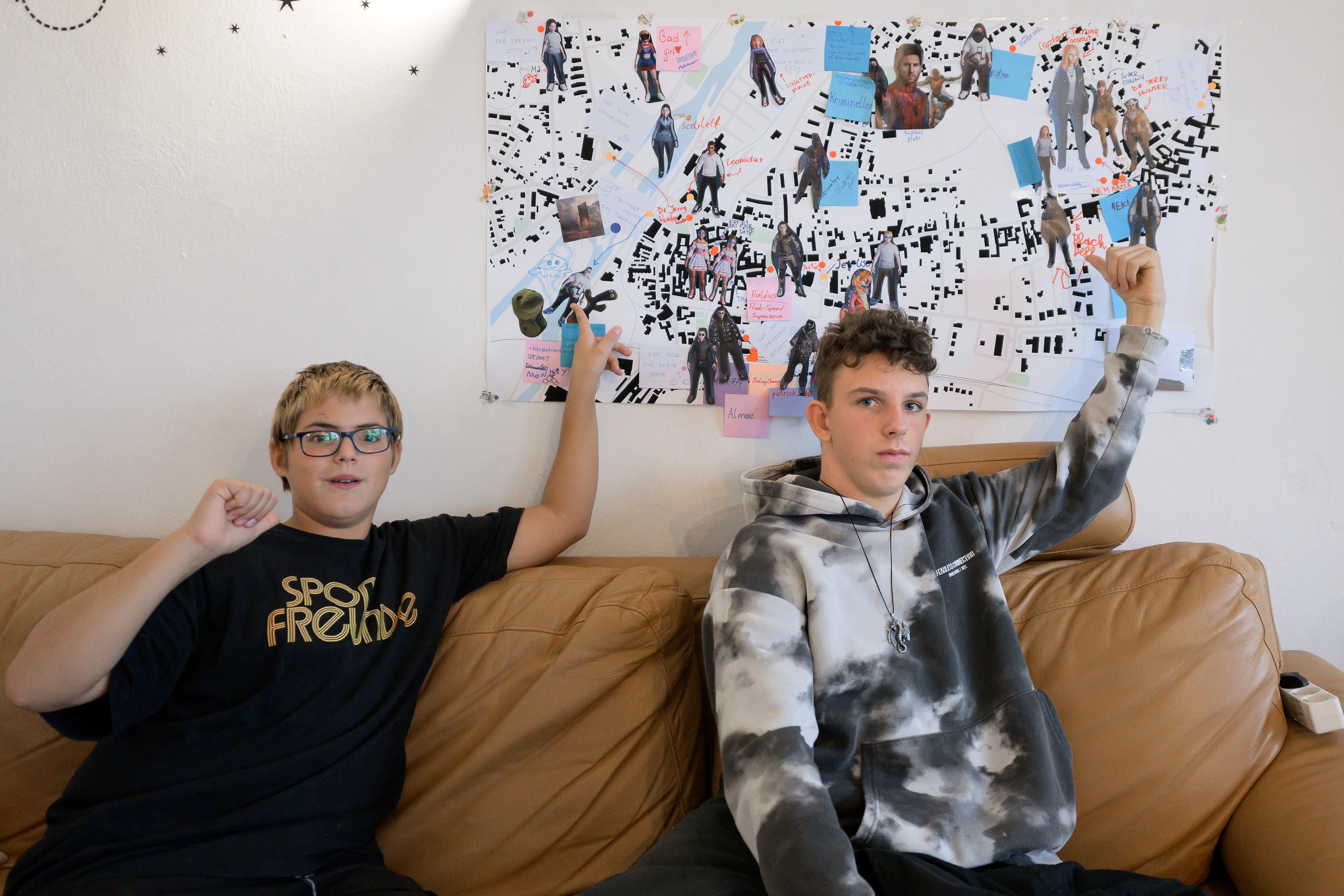
There is one aspect that is rather important for Stadt – Raum – Welt – What? The public realm does not need to be reduced to only the spaces we can experience in reality; it can also include virtual spaces. Joanna Zabielska and the teenagers from the JOT youth center in Traismauer, a town whose history goes all the way back to Roman times, focused on the future. After taking several walks through town, they discovered that the urban realm consisted of spaces full of virtual possibilities and was a starting point for a shift in perspective. The artist and teenagers developed avatars who have superpowers and can appear in urban spaces. The teenagers invented the looks, powers, and character of the figures and picked the places where the heroes or heroines would appear. Designed with the help of collages and a computer, the figures were then transferred to the virtual world. Through abstract colorful signs that can be found in selected urban spaces with an app specially developed by the artist, the protagonists of a futuristic Traismauer can be called up and brought to life. These unusual signs in urban spaces indicate a virtual second level of reality that was designed by young people with the future of Traismauer in mind. Thanks to the town’s support, the project will run for one year and will hopefully inspire many discussions, while encouraging people to go for a walk.
The project was developed in collaboration with JOT Traismauer.

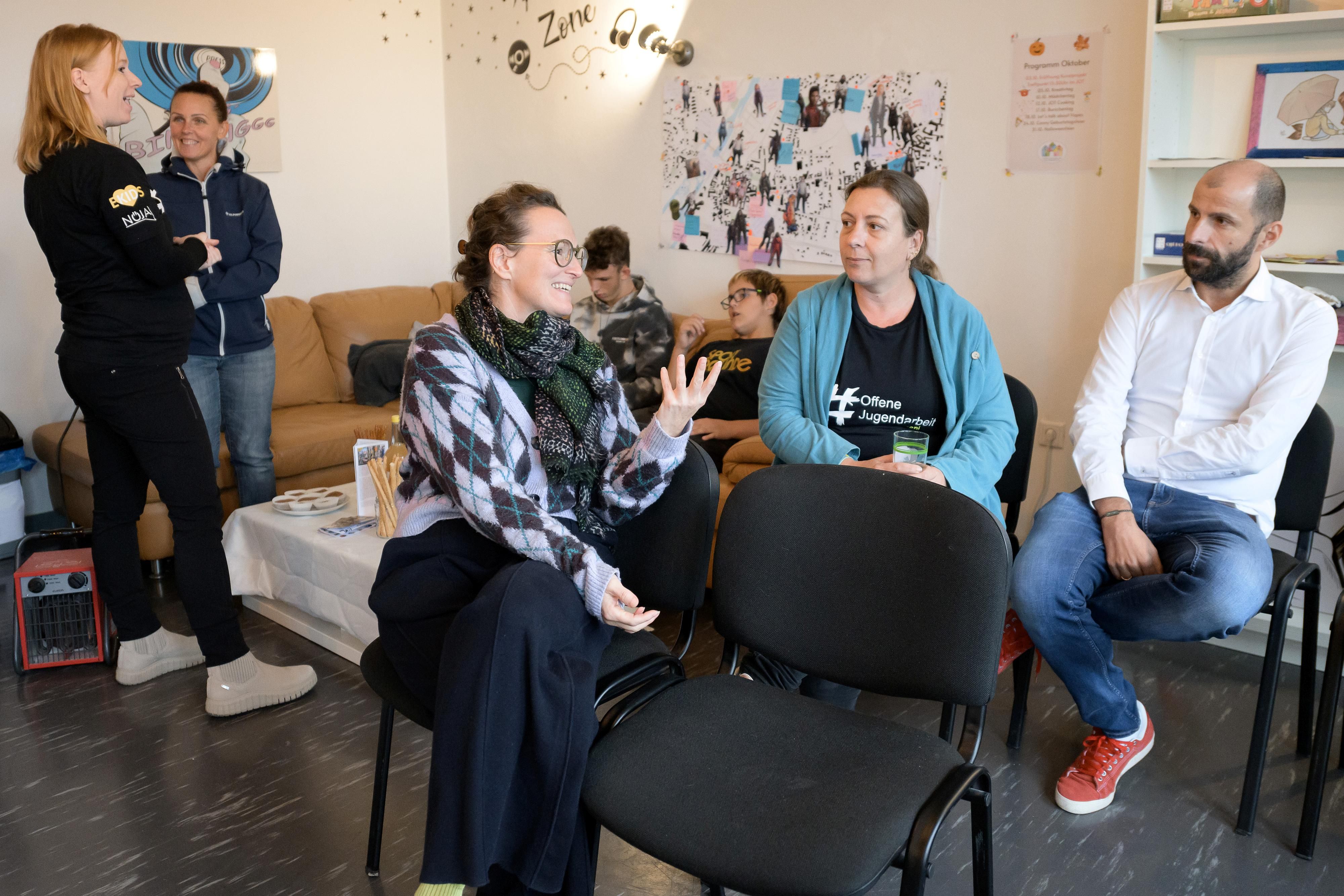
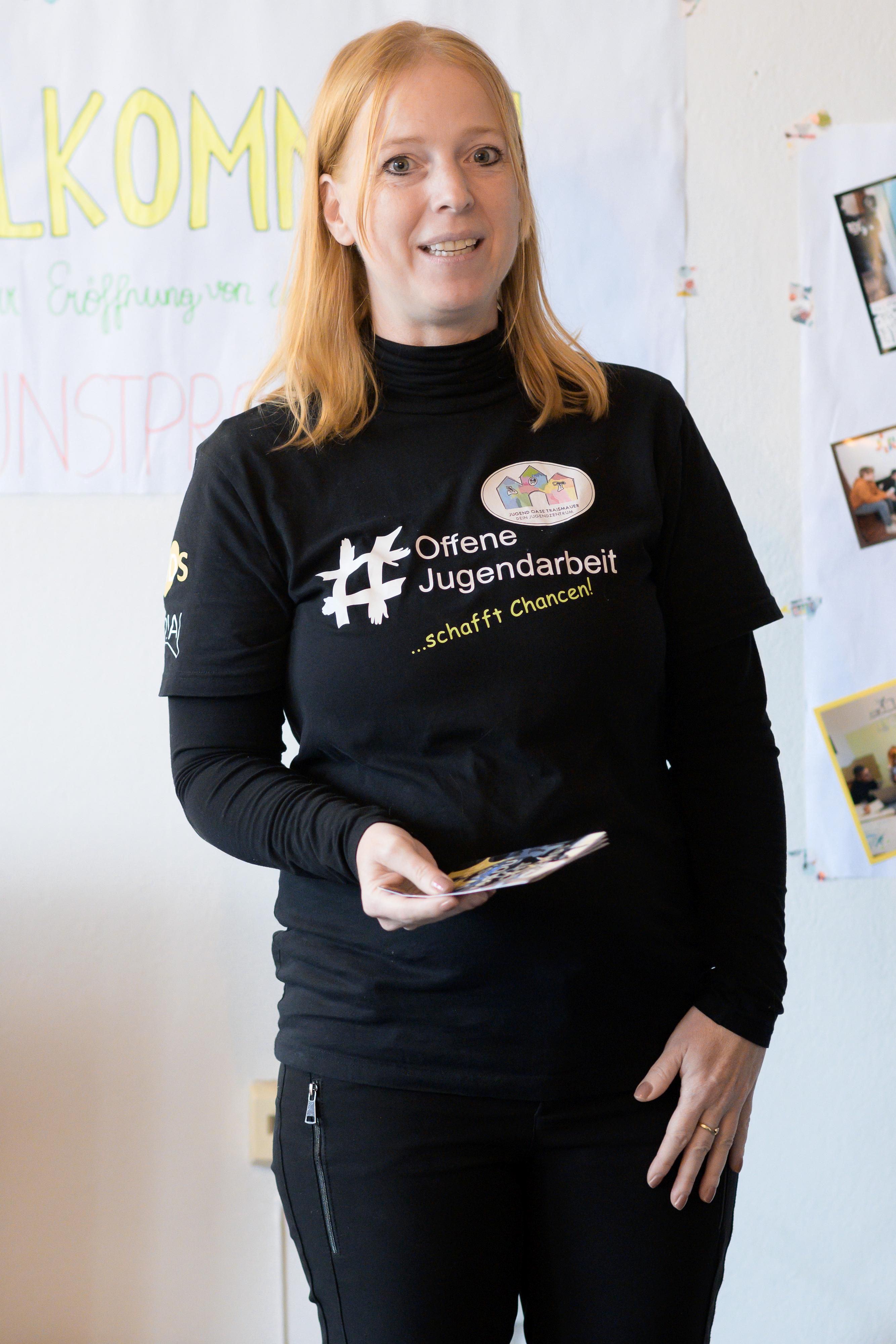

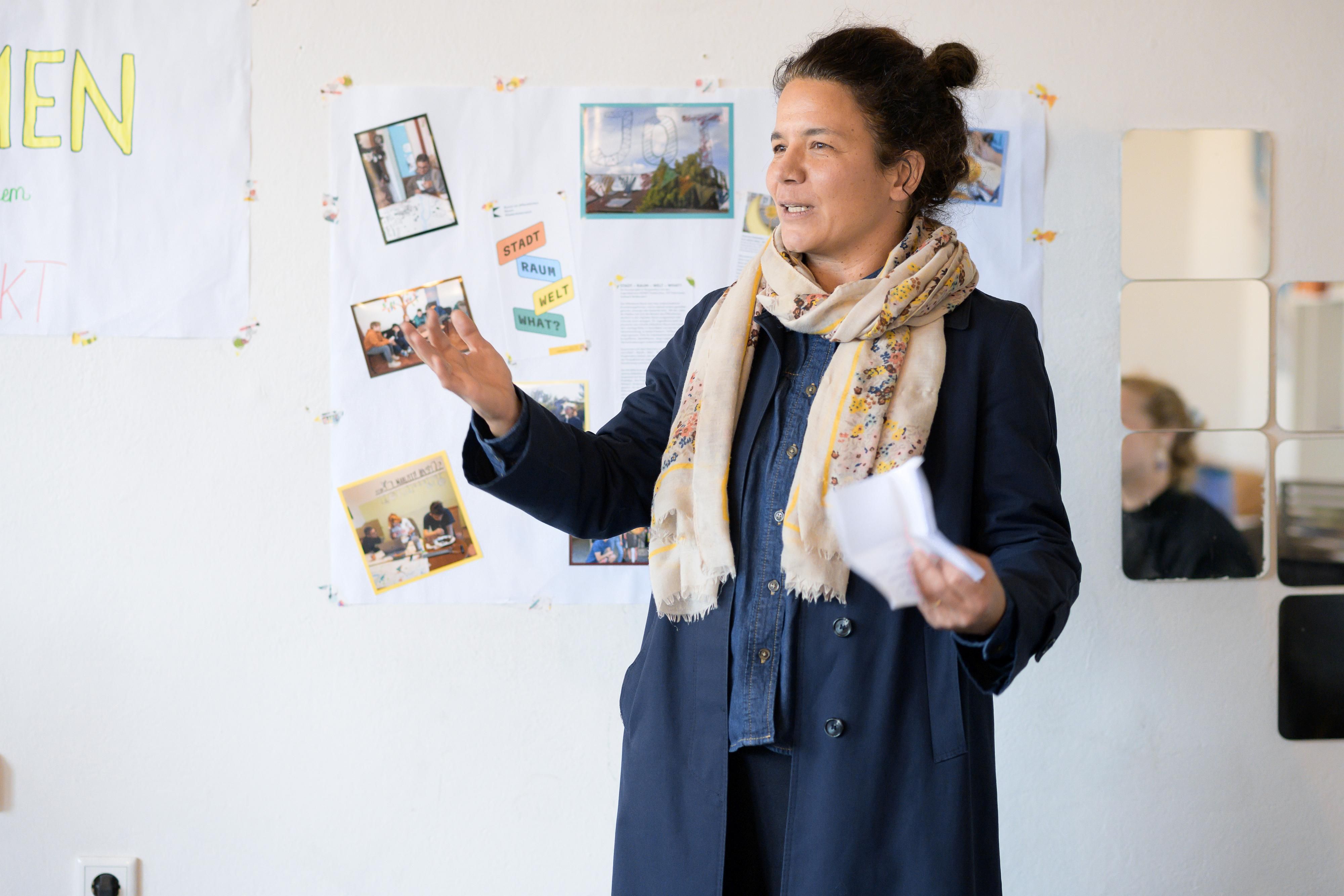
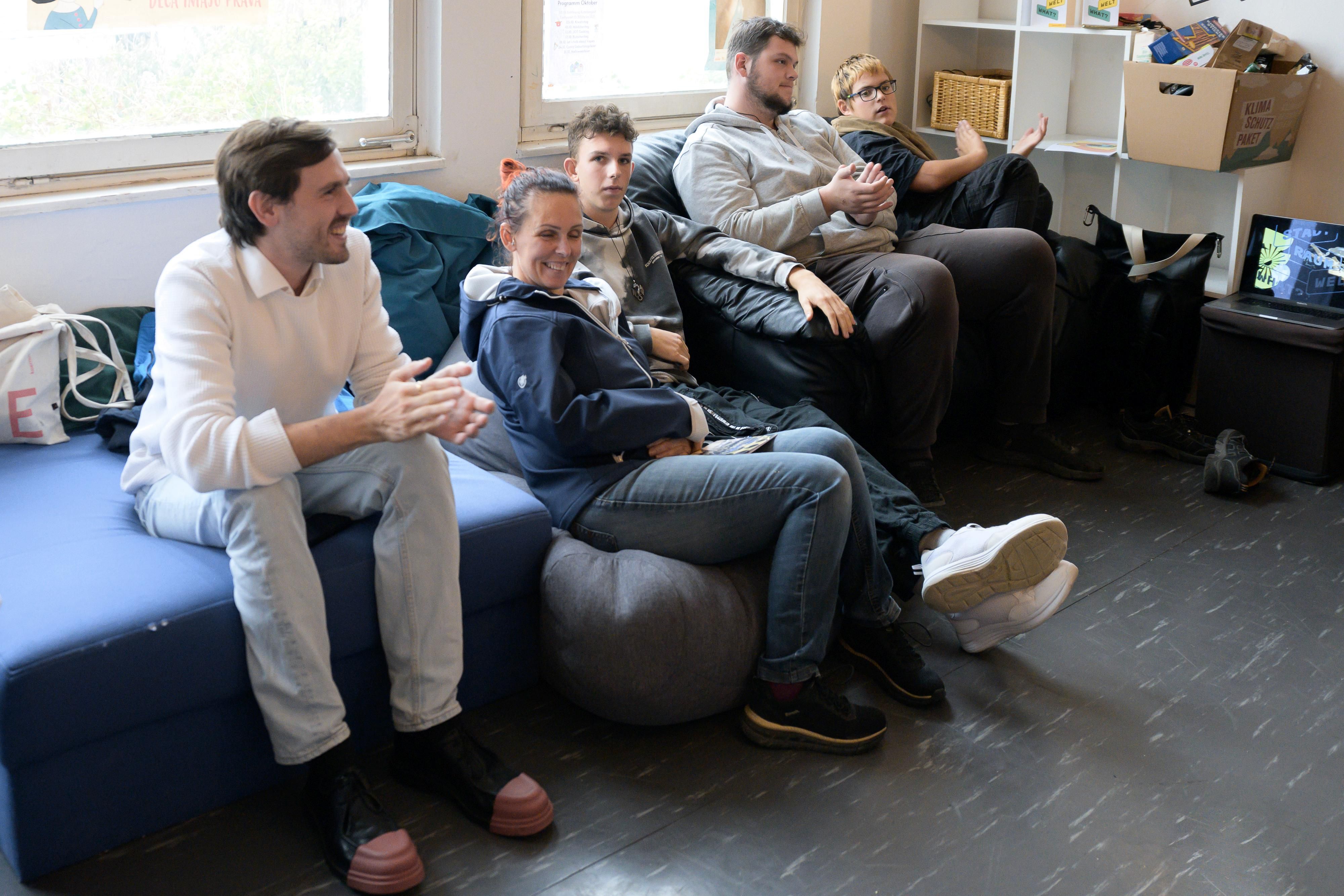
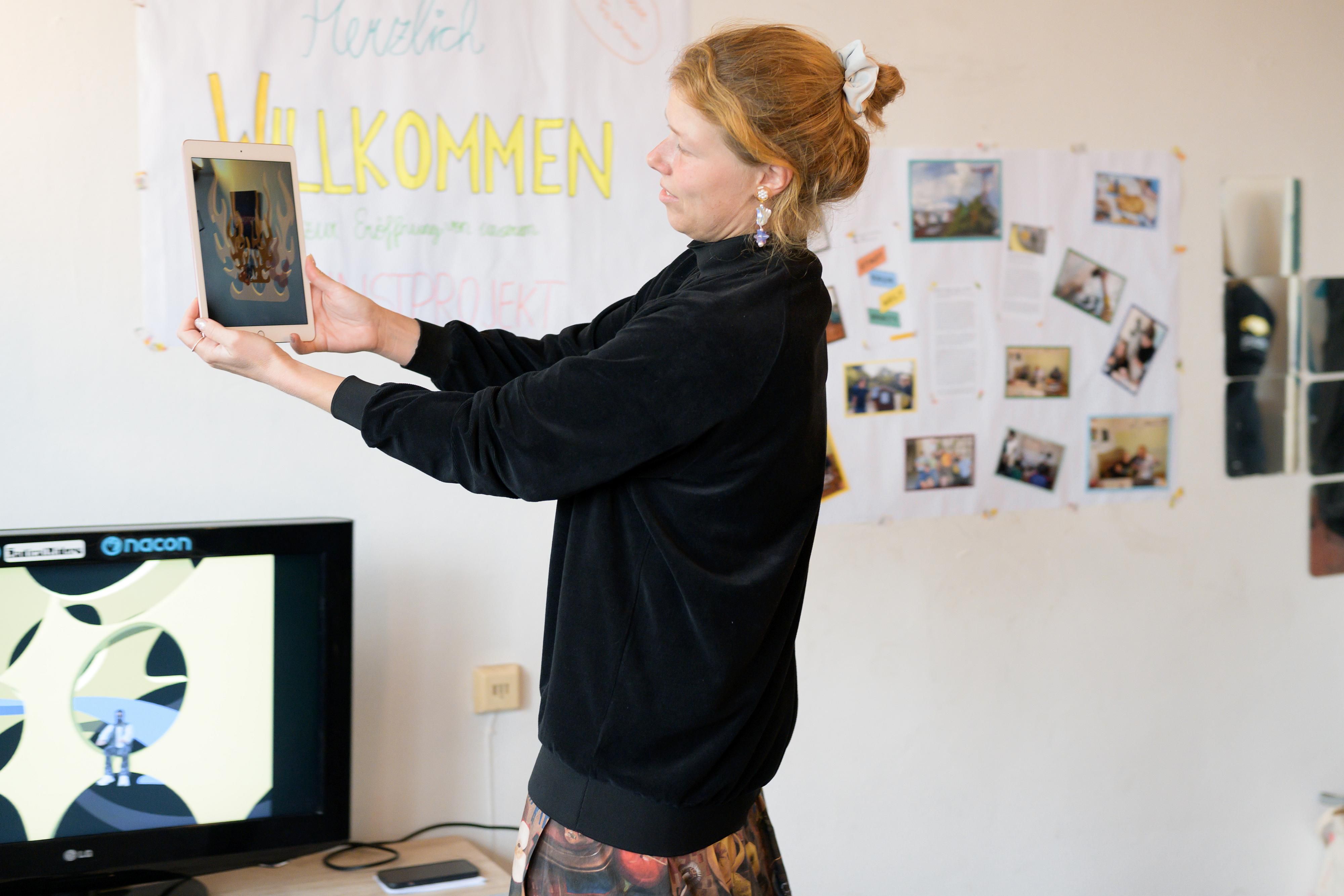
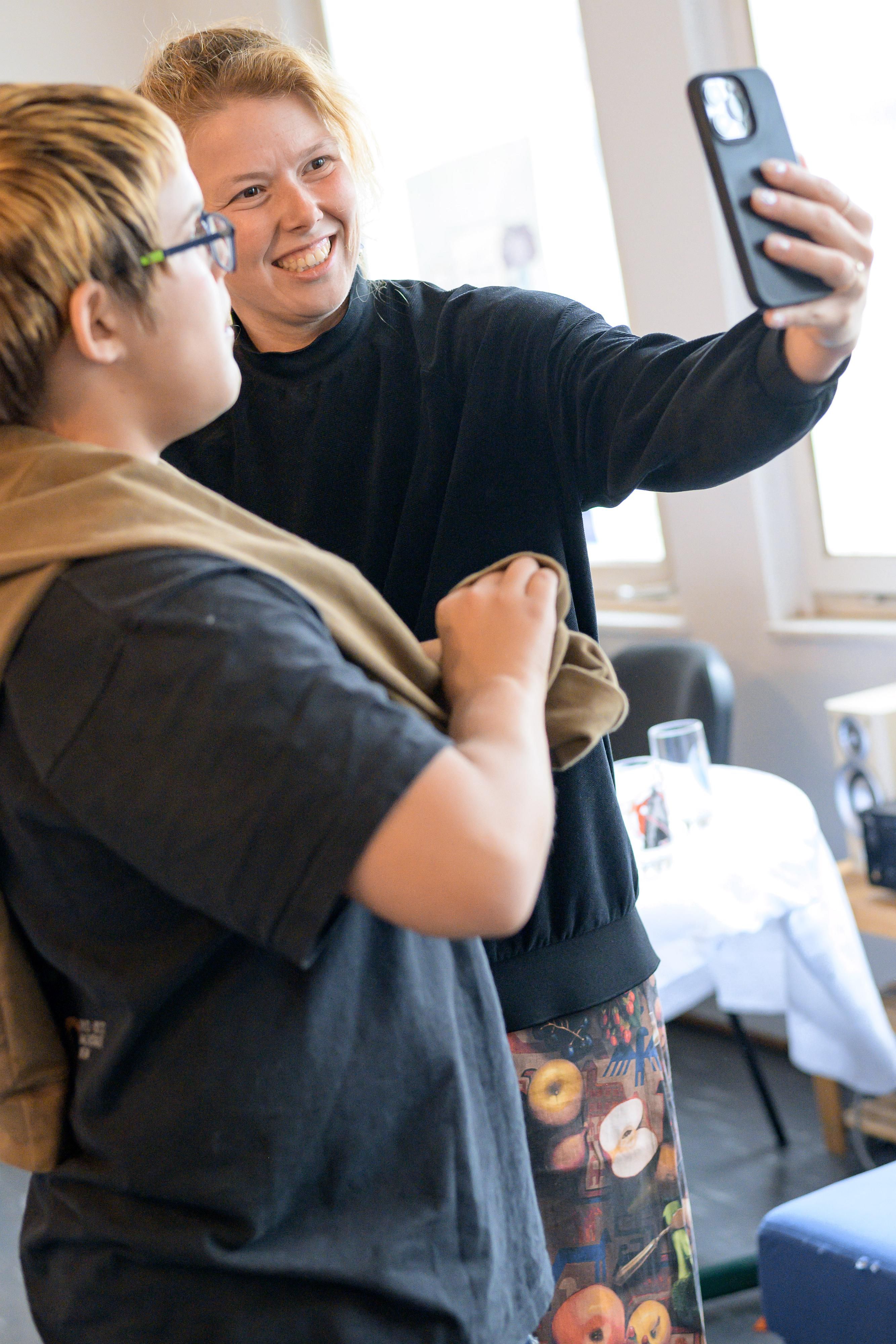
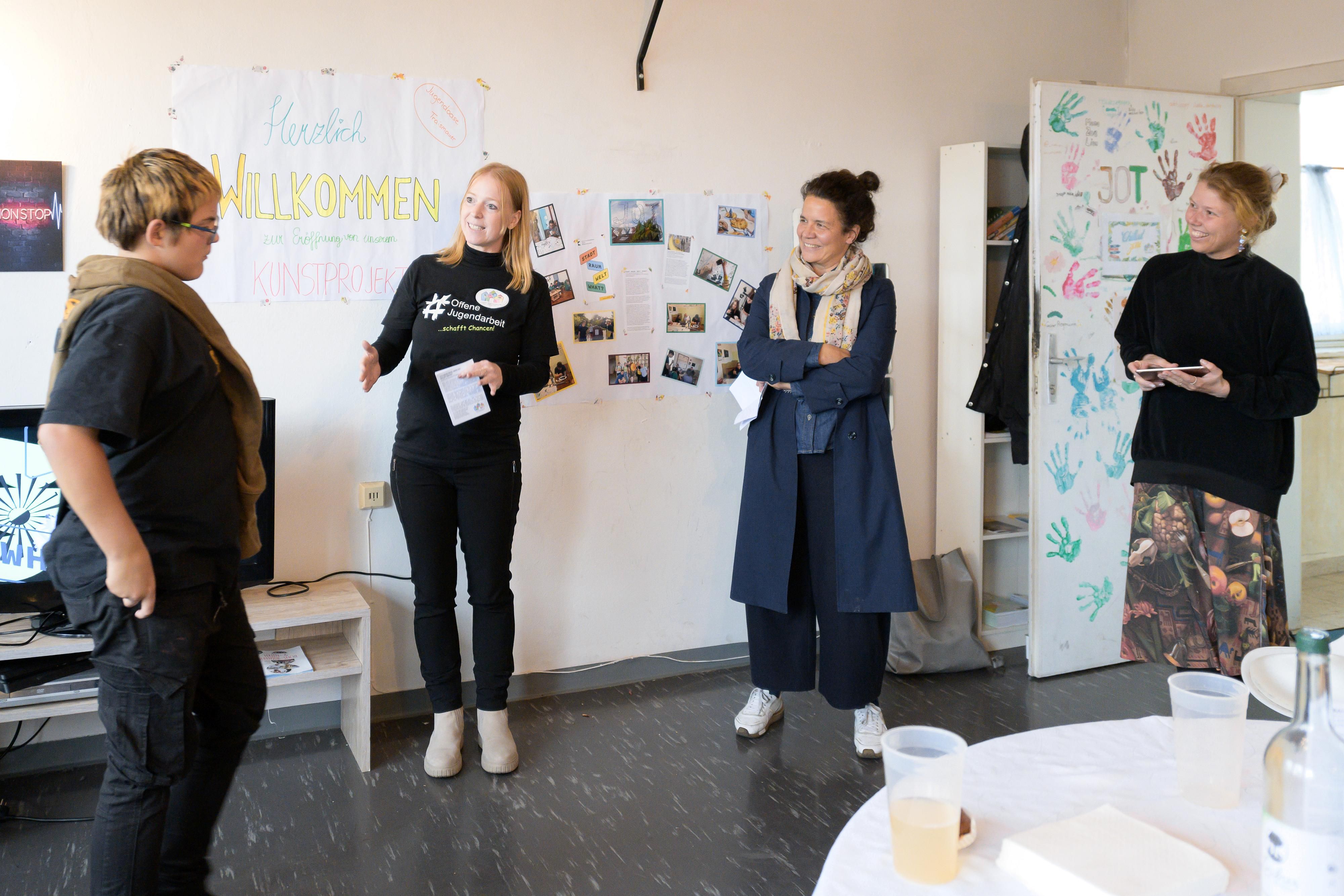

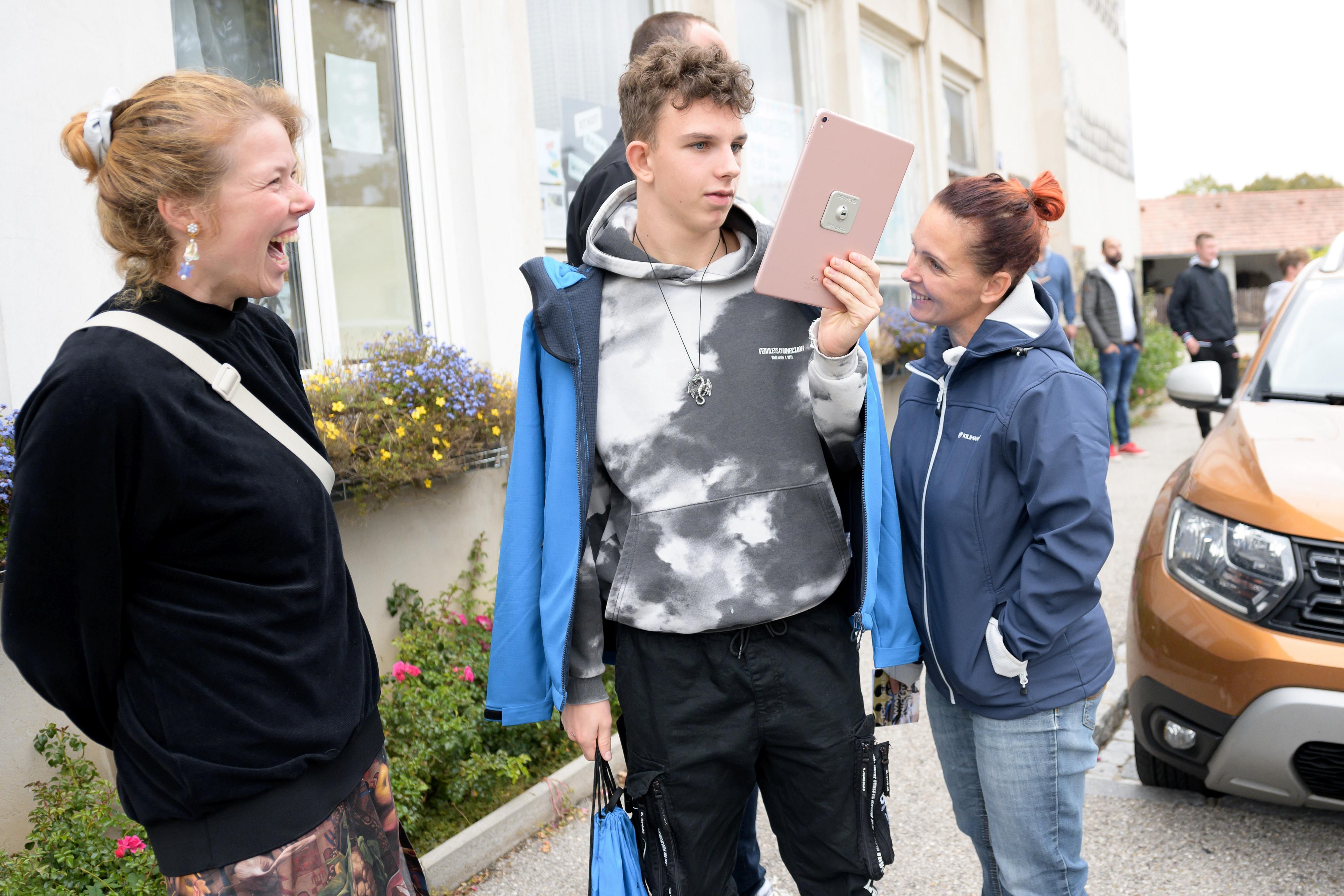
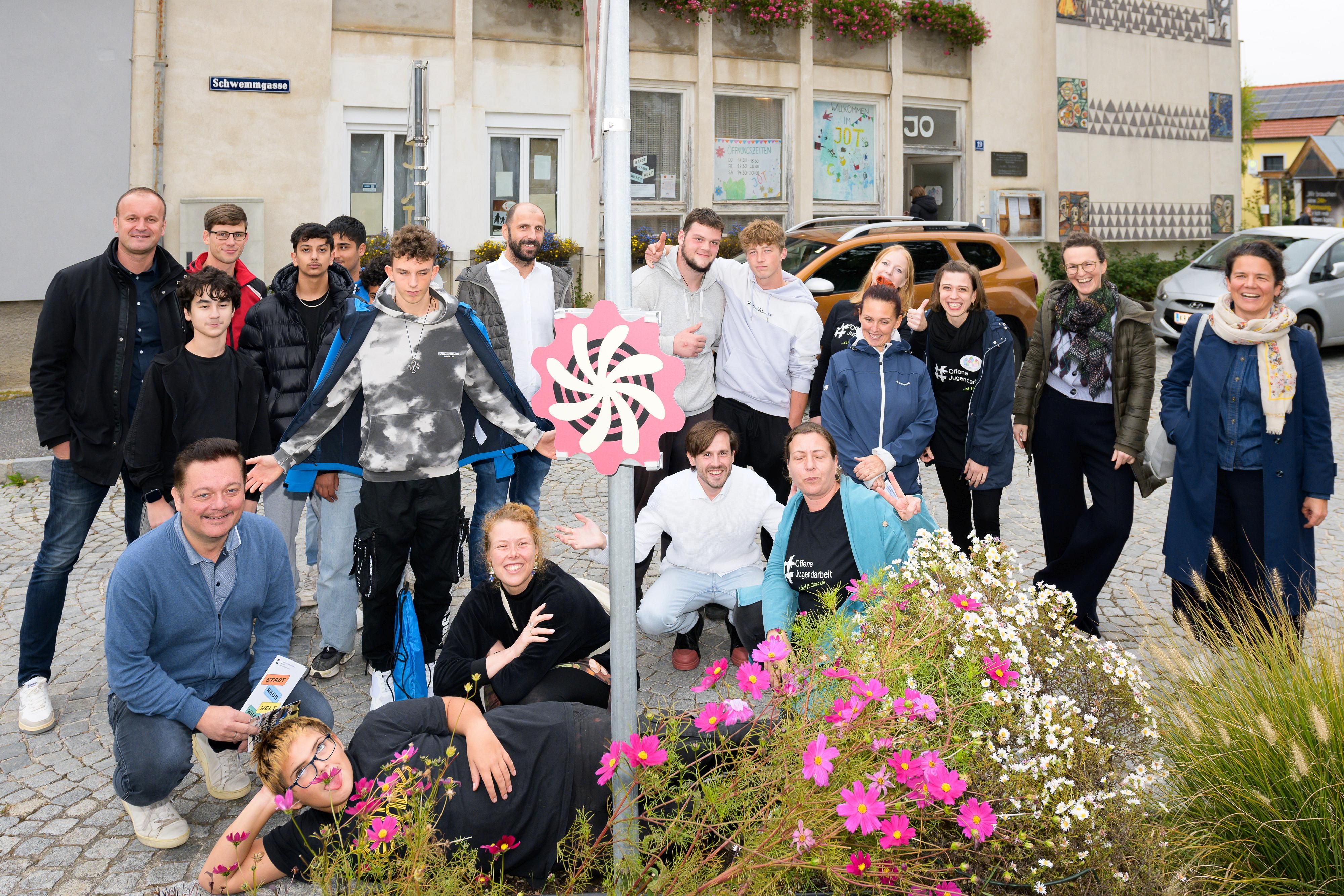
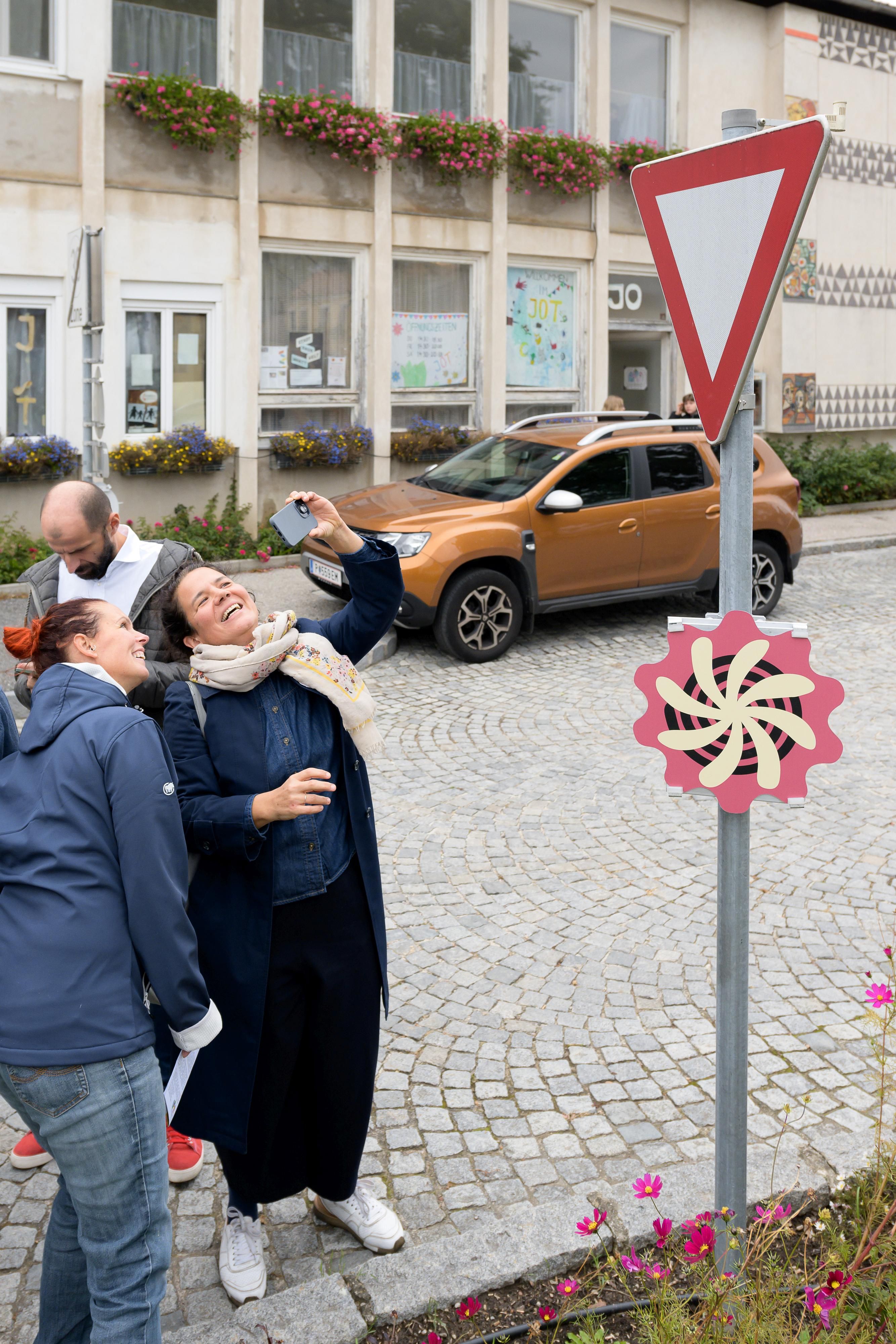
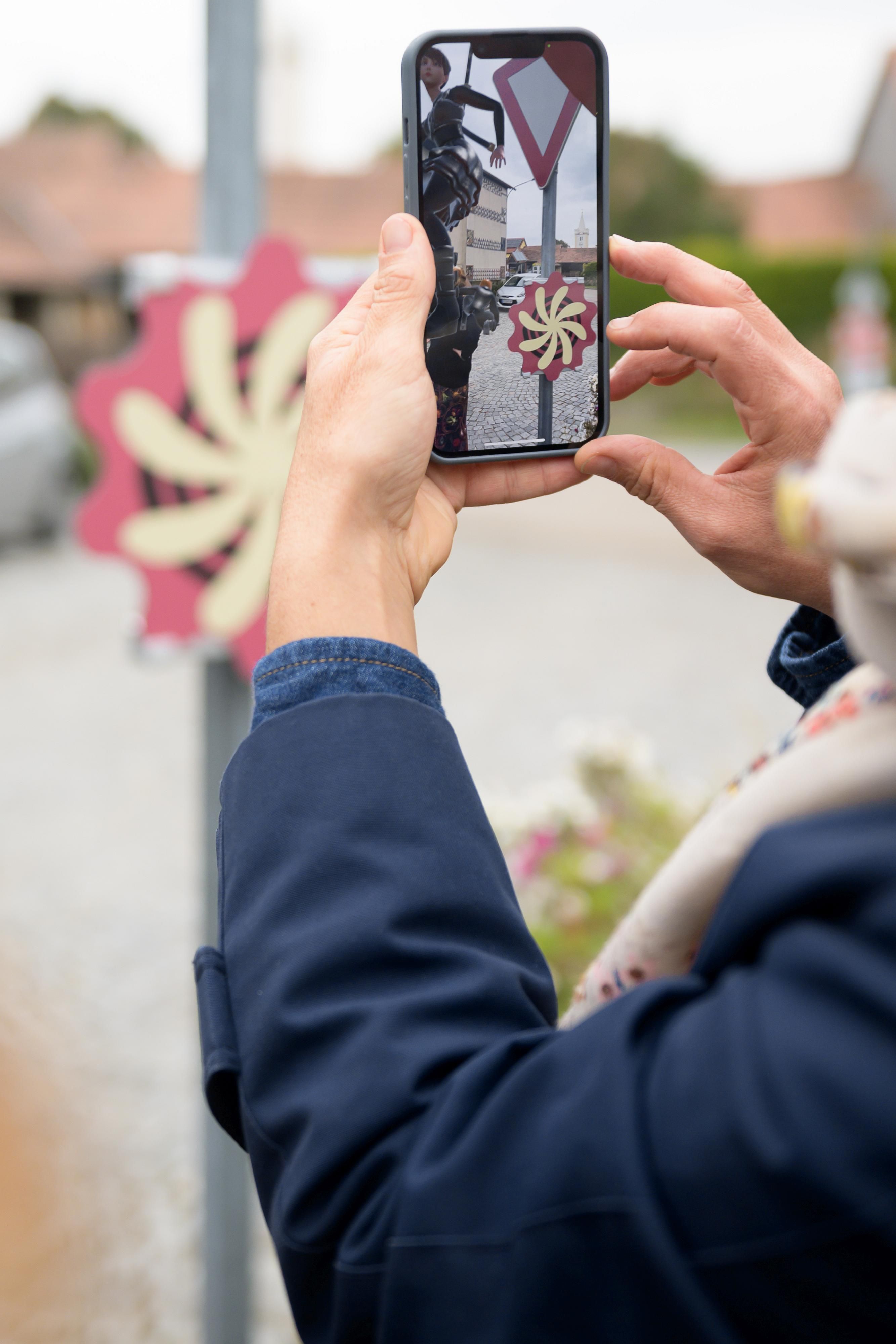
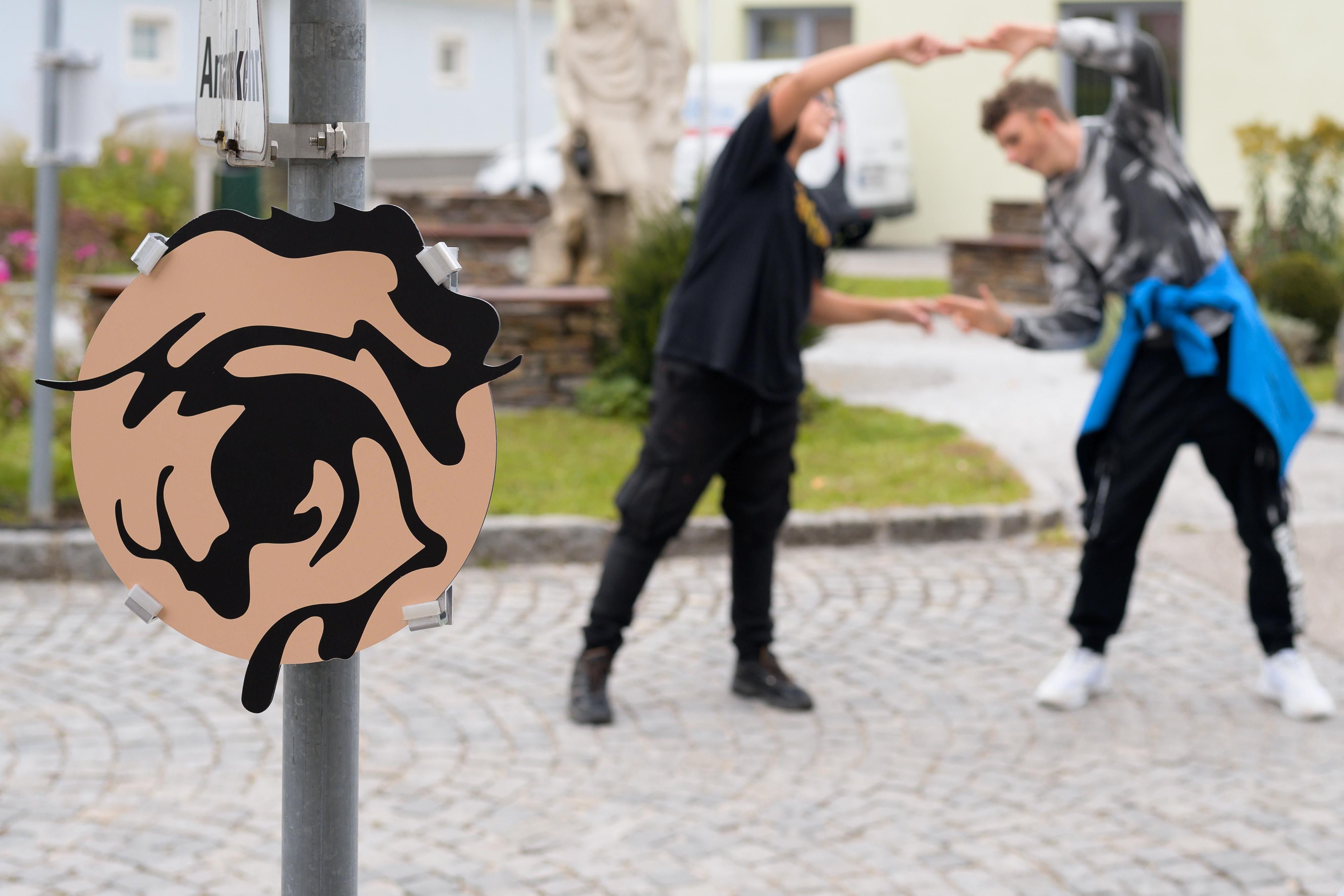
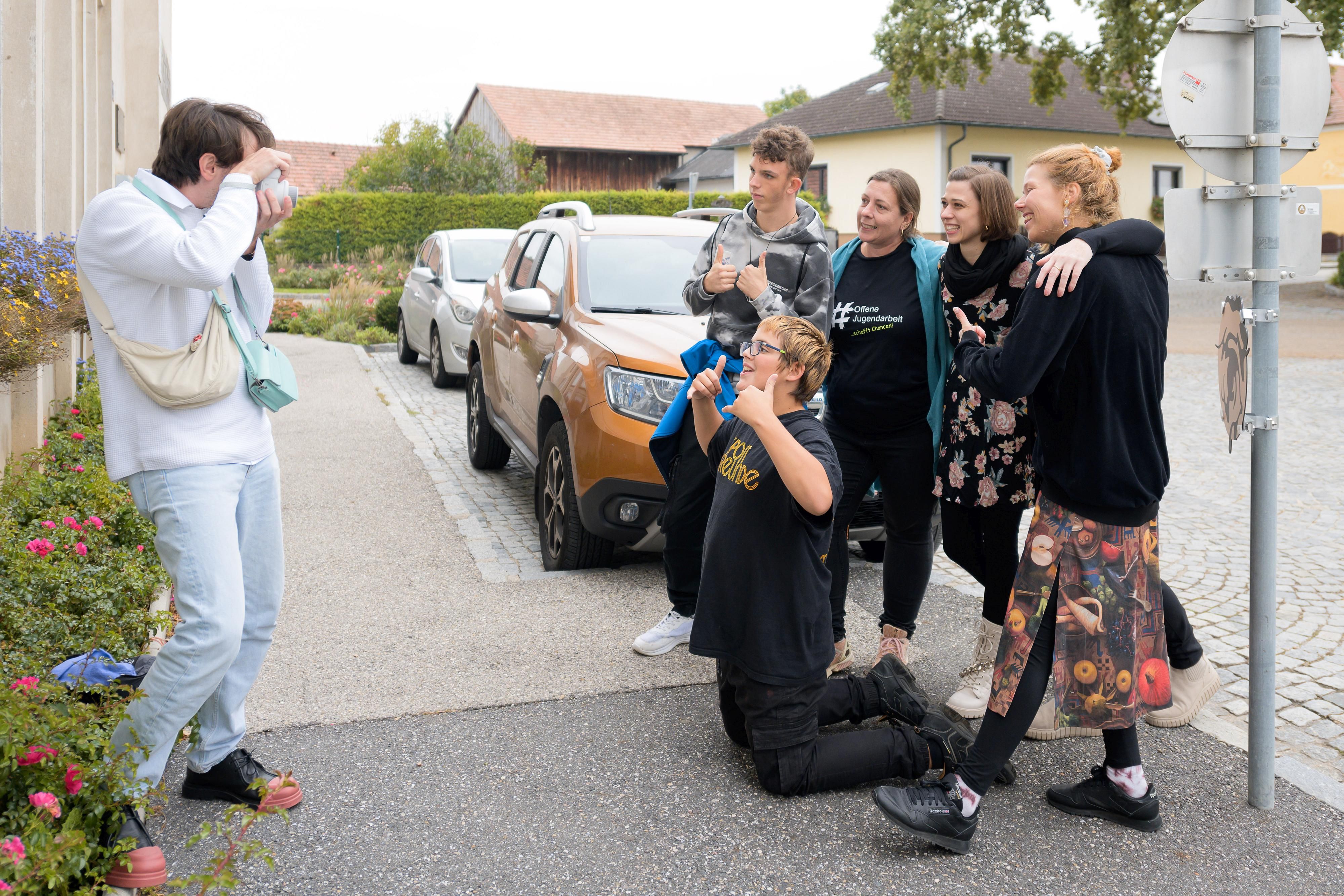
Lotte Schreiber
ICH BIN DIE STADT (I AM THE CITY)
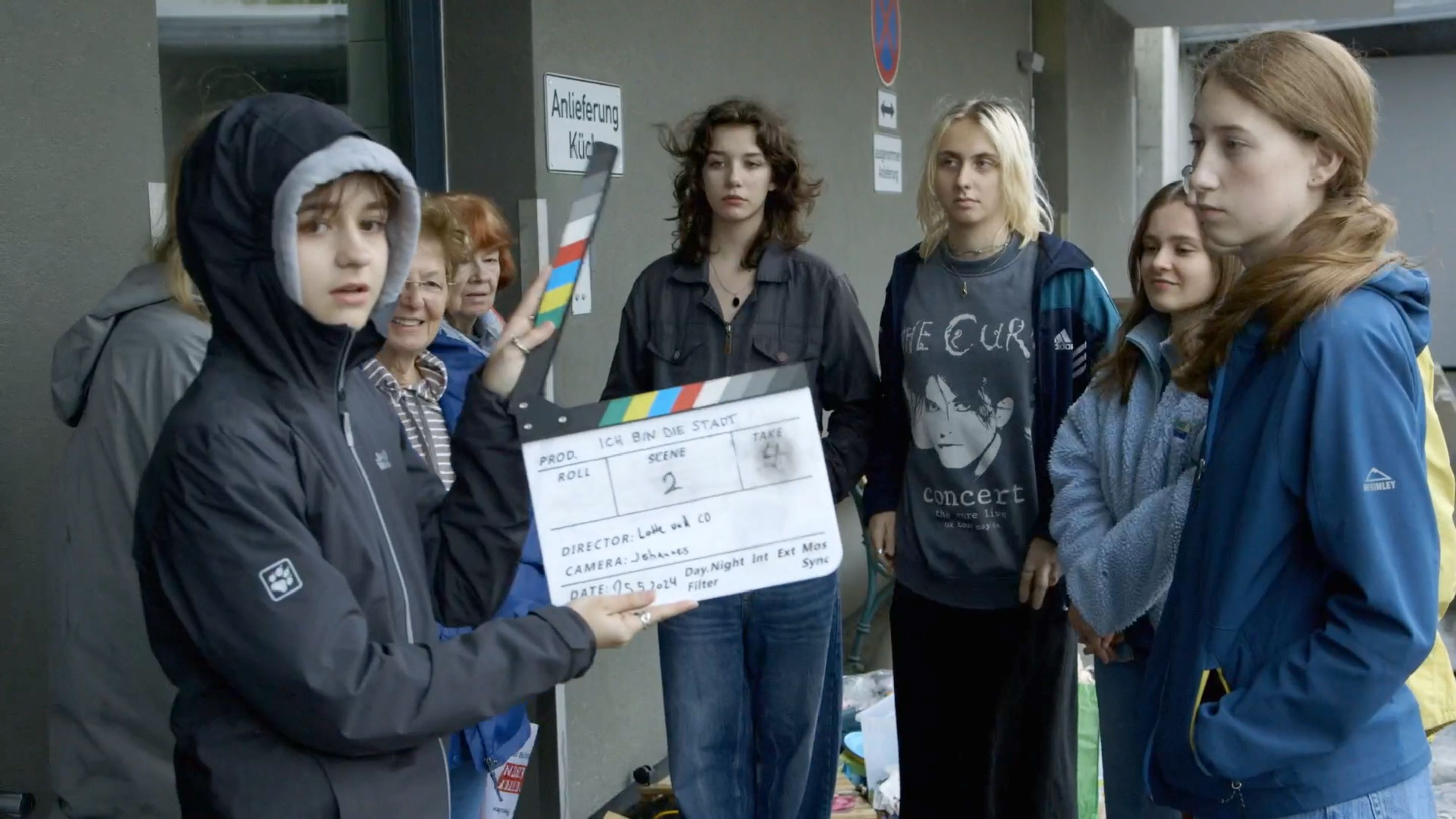
This short movie, which the film maker and film curator Lotte Schreiber developed together with the Outback youth center and the teenagers of the greater Wolkersdorf area, focuses on the Platz der Generationen (Square of Generations), which was built there a few years ago. This public square connects several local institutions with a secondary school, a state nursing home, and a neighboring residential area. It therefore brings together people from different generations, all of whom use this meeting “area.” The short film, which the artist conceived and realized together with participating children, teenagers, and young adults, addresses the public square in three chapters. It begins with the physical appropriation of the square by several of the kids, who then interact with the street furniture in unconventional ways to create images that represent the different needs associated with such a place. The second chapter transports the private realm into the outdoors in the form of house plants as a way to initiate a subtle shift in, and the intertwining of, the needs of individuals and society. These scenes alternate with short conversations between the teenagers and nursing home residents and among the kids themselves. They talk about the future, about uncertainties, as well as politics, climate, and society. The last chapter brings us full circle. Throughout the entire short movie, a soundtrack of bass sequences and spoken sentences can be heard. These are from the song “Gemeinsam” (Together) by the band Tonado from Wolkersdorf and were written especially for the film and performed at the public square on the last day of shooting. Ich bin die Stadt was then presented to a large audience as a supporting film before the main feature for Youth Day at the Wolkersdorf summer cinema.
Together with the Outback youth center in Wolkersdorf
The Short film can be seen under “Video”!

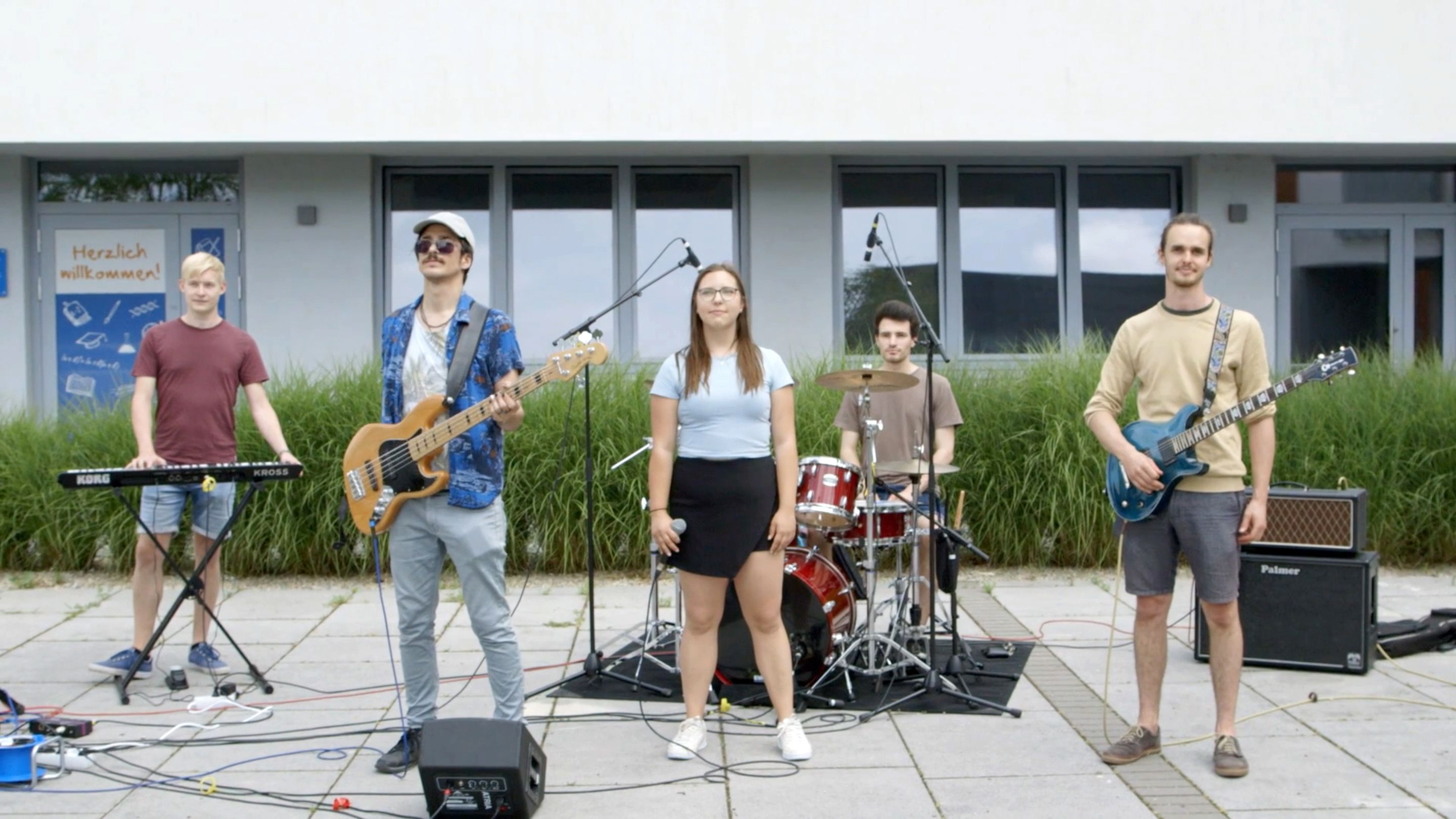
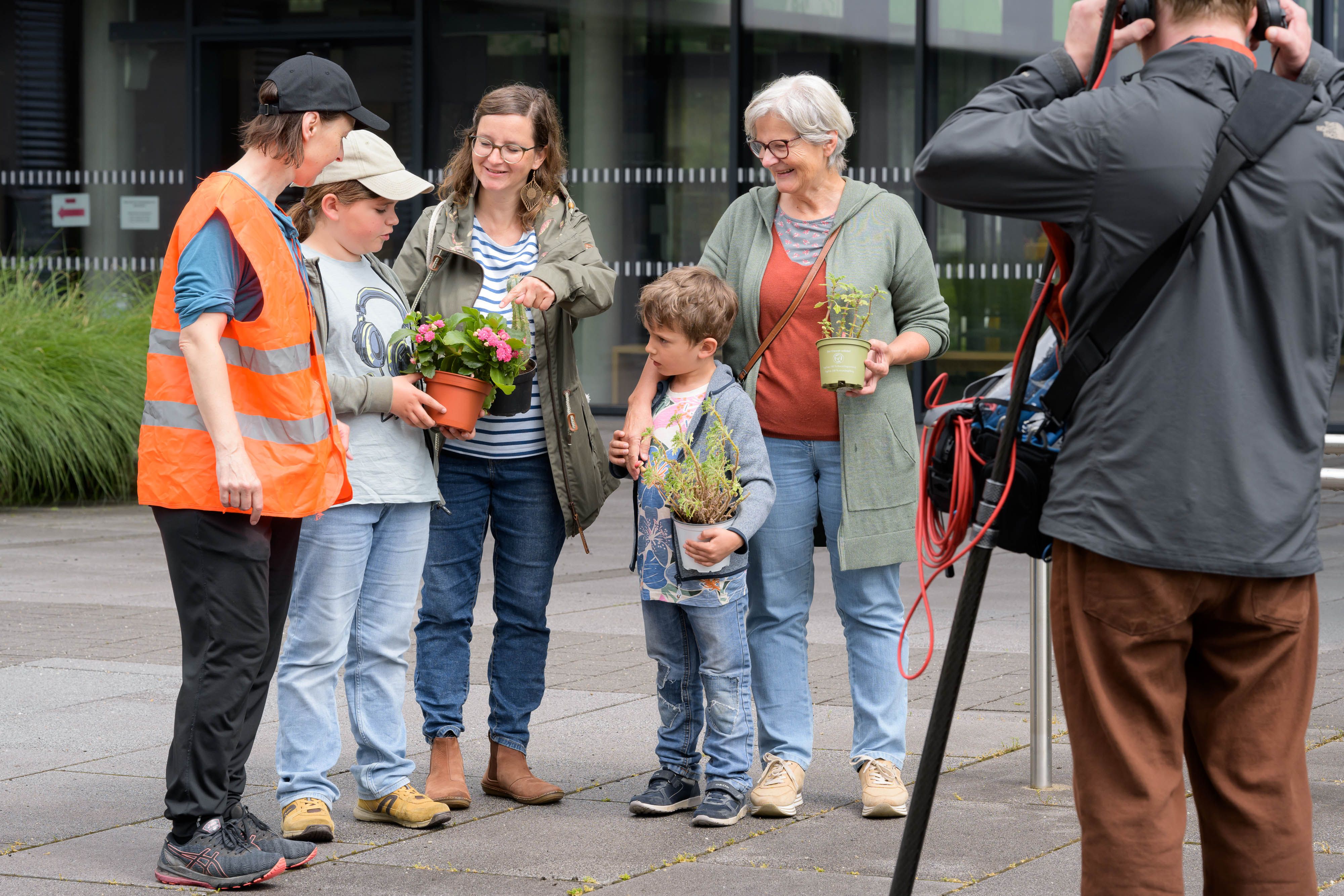
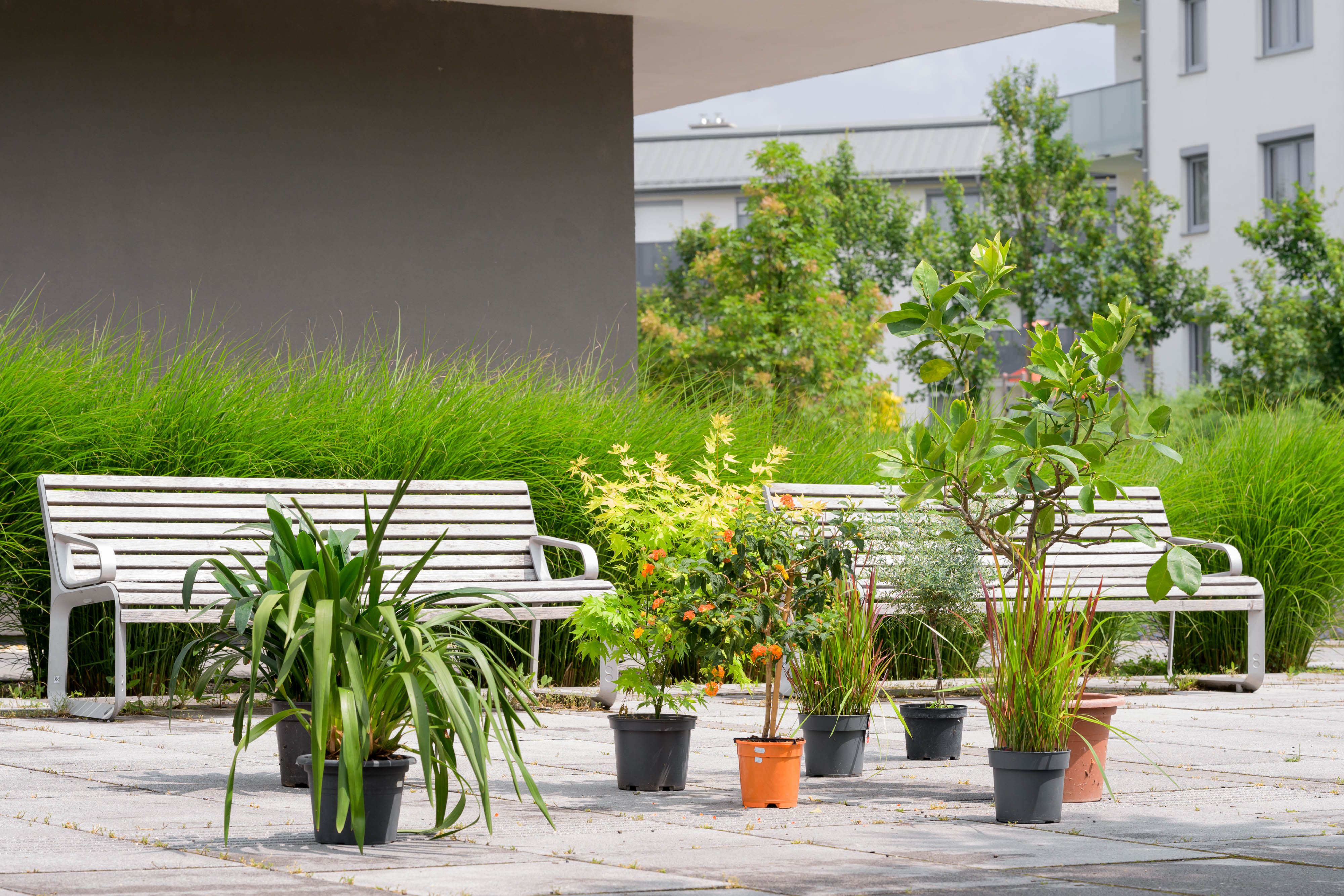
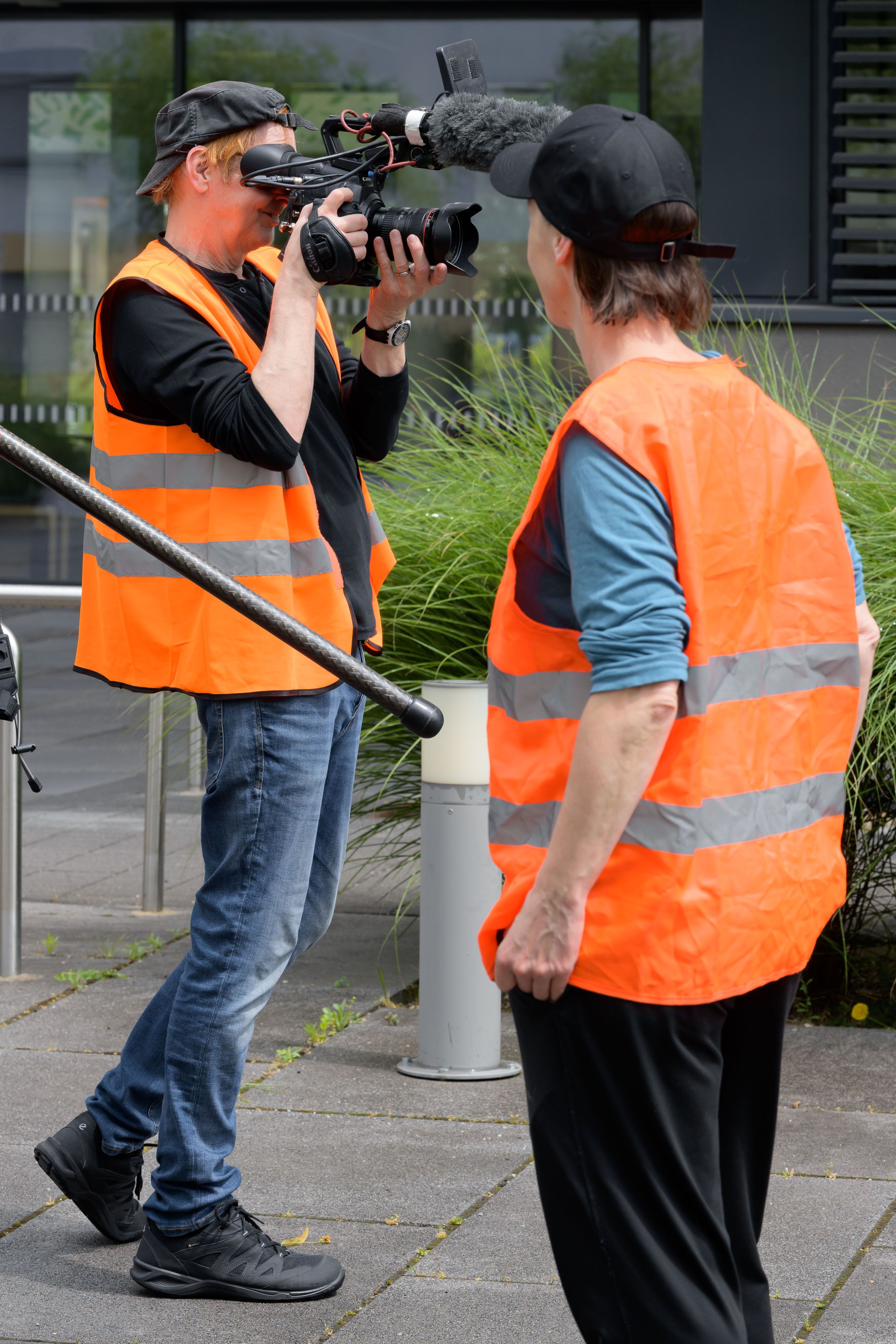
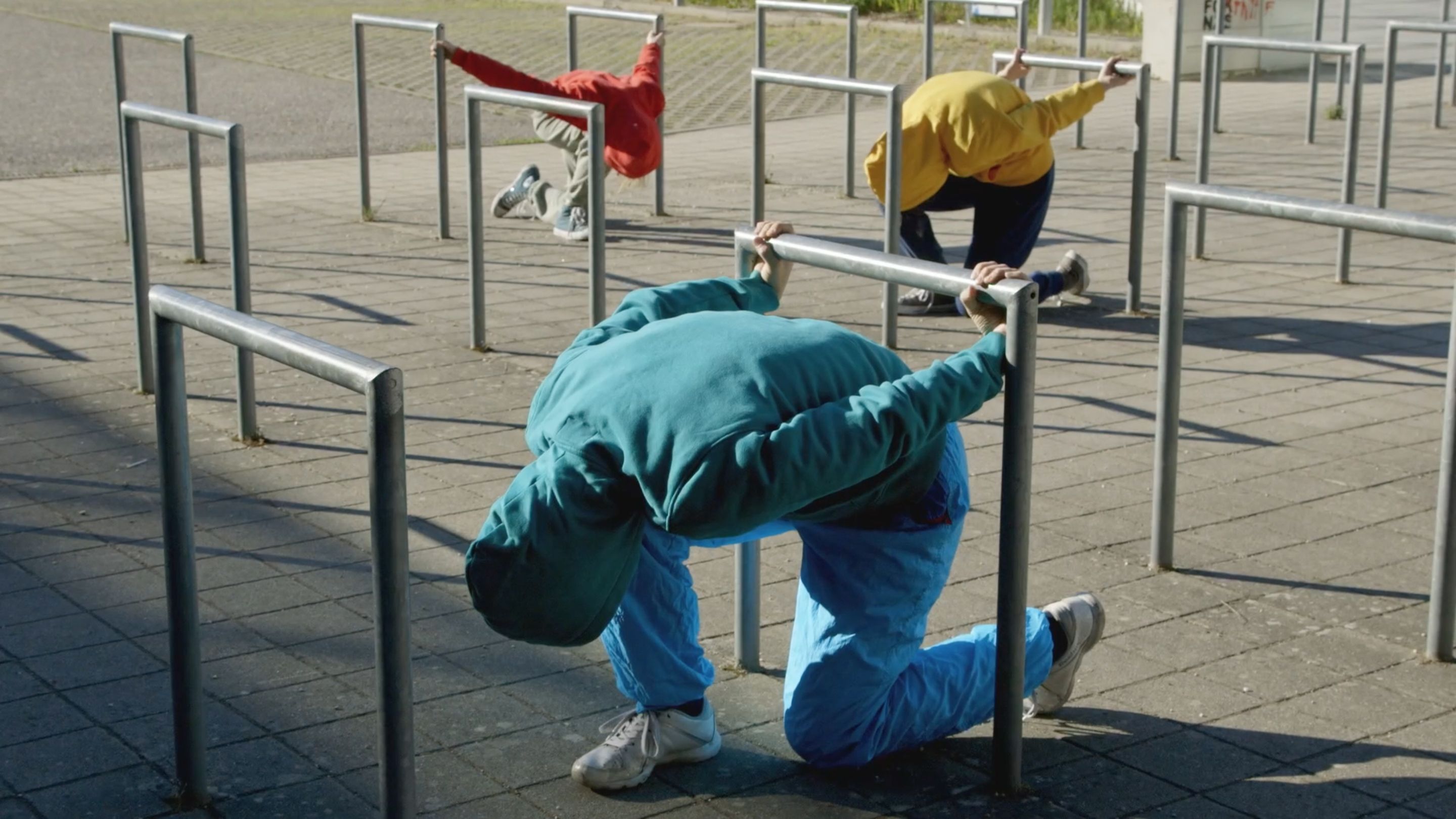
Edith Payer
ALLE BAUEN EINE WELT AUS MÜLL UND WIR MACHEN SIE NOCH SCHÖNER. (EVERYONE IS BUILDING A WORLD MADE OUT OF GARBAGE AND WE ARE MAKING IT MORE BEAUTIFUL)

(finished)
(EVERYONE IS BUILDING A WORLD MADE OUT OF GARBAGE AND WE ARE MAKING IT MORE BEAUTIFUL)
In Traiskirchen, Edith Payer and the teenagers from the KOMET youth center reflected on what would happen if we turned the norms that regulate our daily lives and how we consume things upside-down in a productive way. Payer, who works in different media and is a precise observer of what goes on in our society, and the teenagers created a “friendly memorial of consumption” made out of collected garbage, garden and lawn decorations, mass-produced goods, and found objects. Everyone worked with their hands extensively: hammering, gluing, nailing, turning meanings on their heads, and giving worthless things a second chance. The first results of the artistic approach to these questions were presented on the town’s environment day. In the end, there were three mobile platforms on which an extremely multifaceted and polyphonic ensemble was installed as a detailed cosmos of fantastical and comical creatures. Behind this humorous appearance was also the serious questioning of the rules and norms affecting how we judge something as beautiful or ugly, as something to throw away, or as something new to buy. Thanks to the town’s cooperation, the group of sculptures was able to engage in a dialogue with passersby at a shopping mall in Traiskirchen over the summer, after which the sculptures were presented at the “Garten der Begegnung” (a communal project for refugees and locals alike) for a cultural event called Kultur:Tag Traiskirchen. After that, the sculptural group was dismantled by the artist and the teenagers at the KOMET. Some of the elements found new homes with the participants.
In cooperation with KOMET Traiskirchen


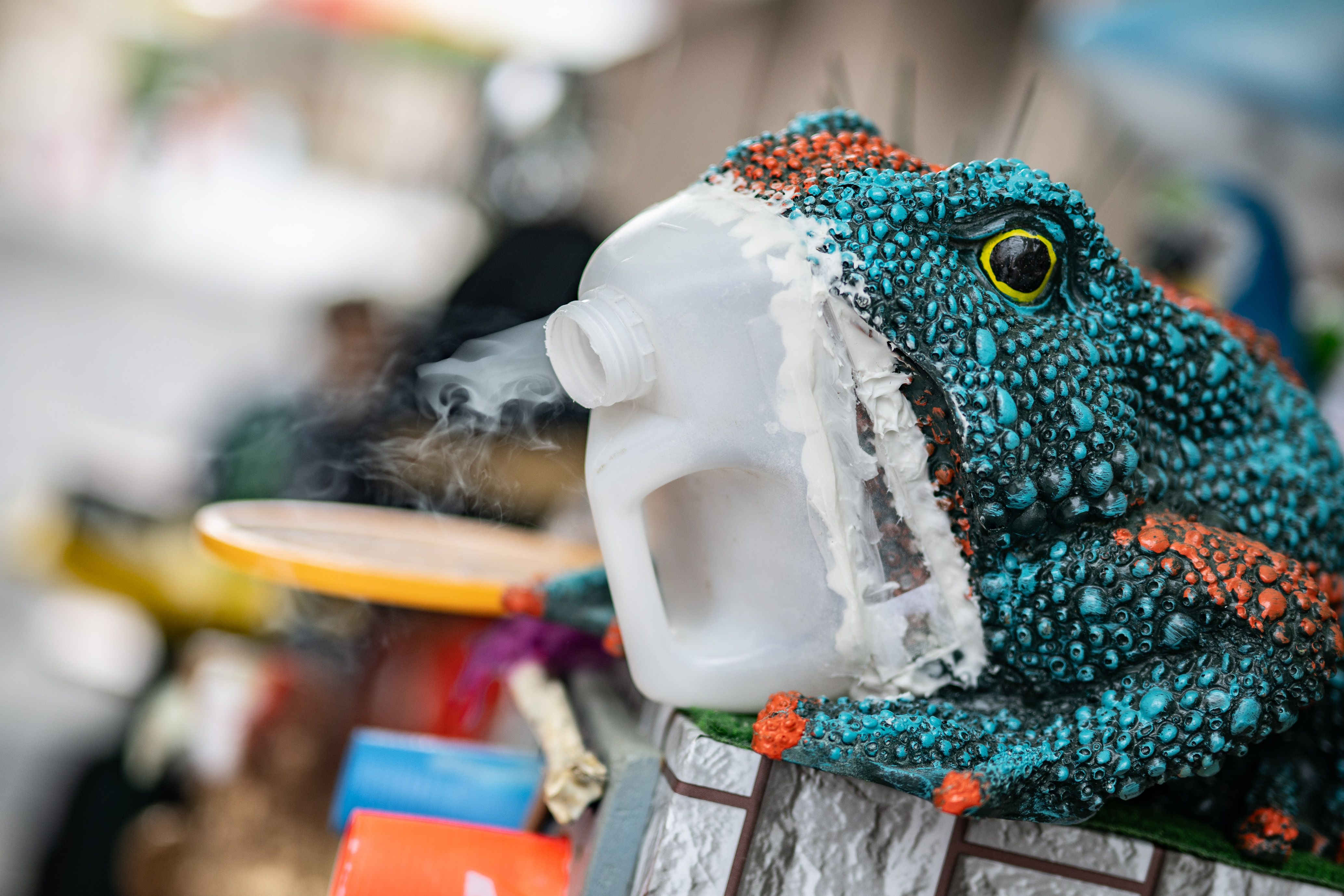
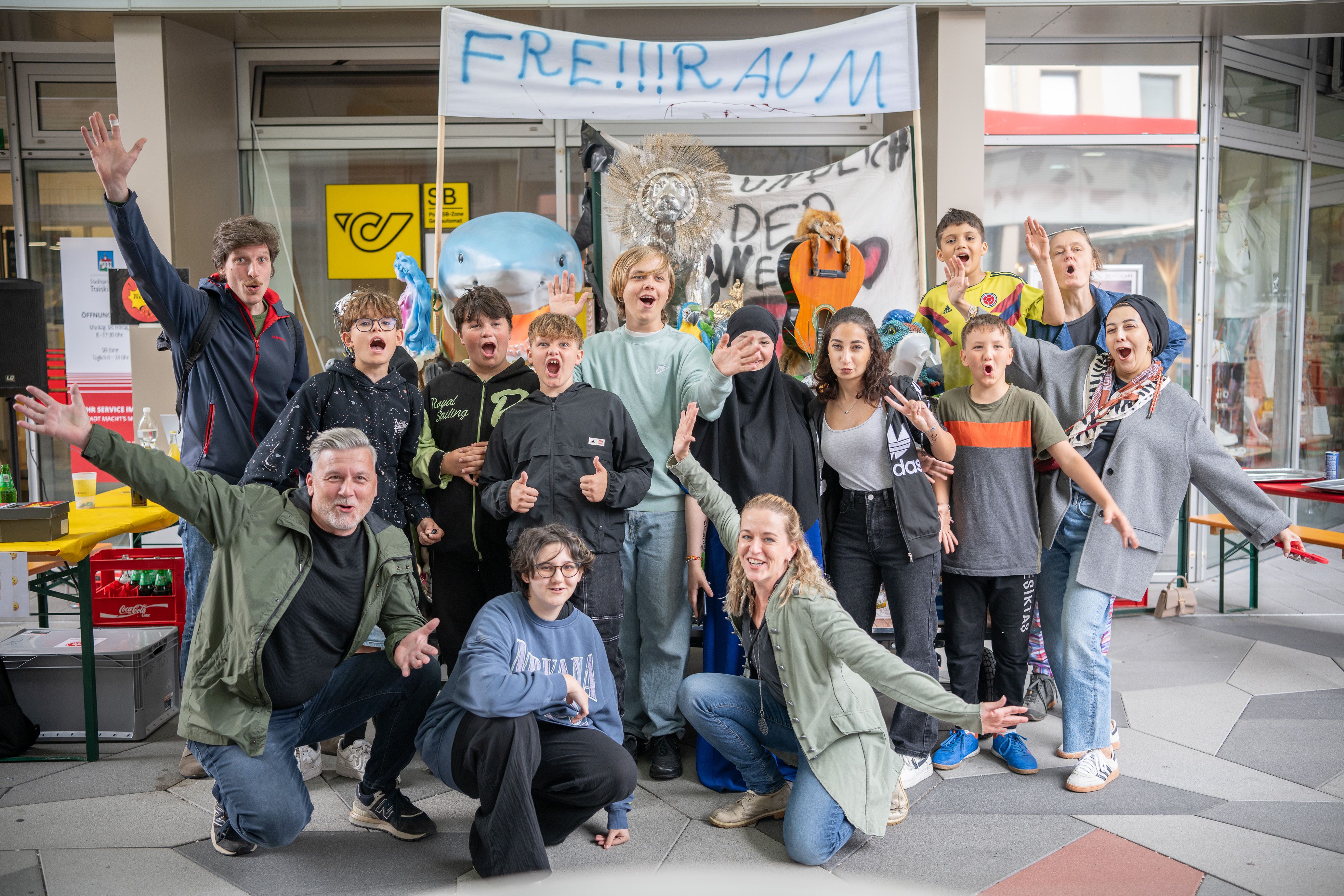
Images (15)


